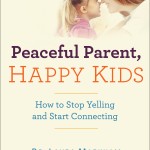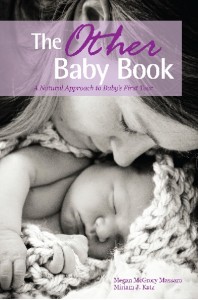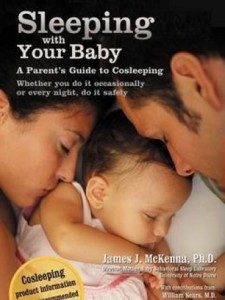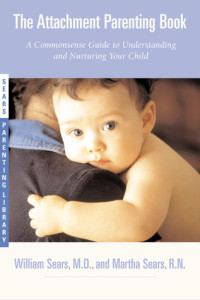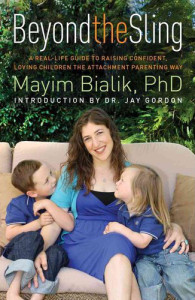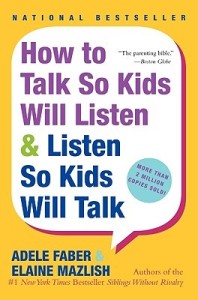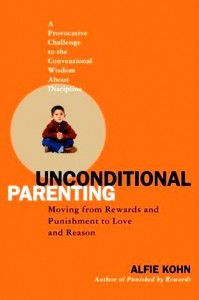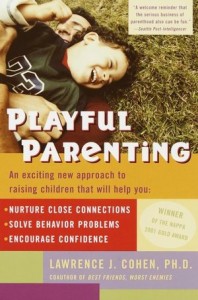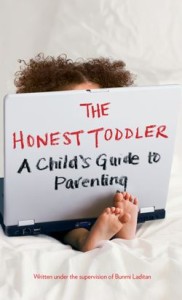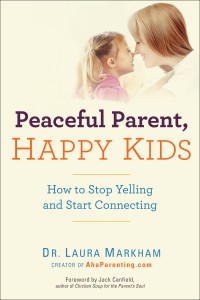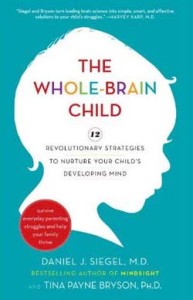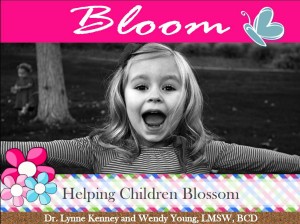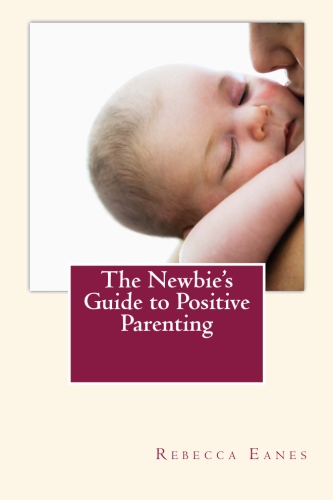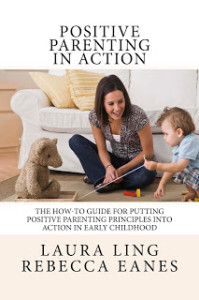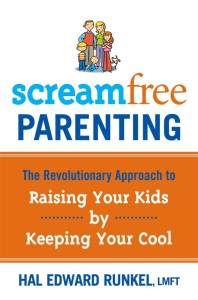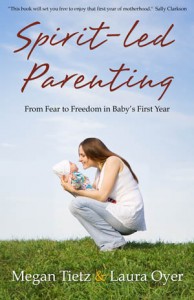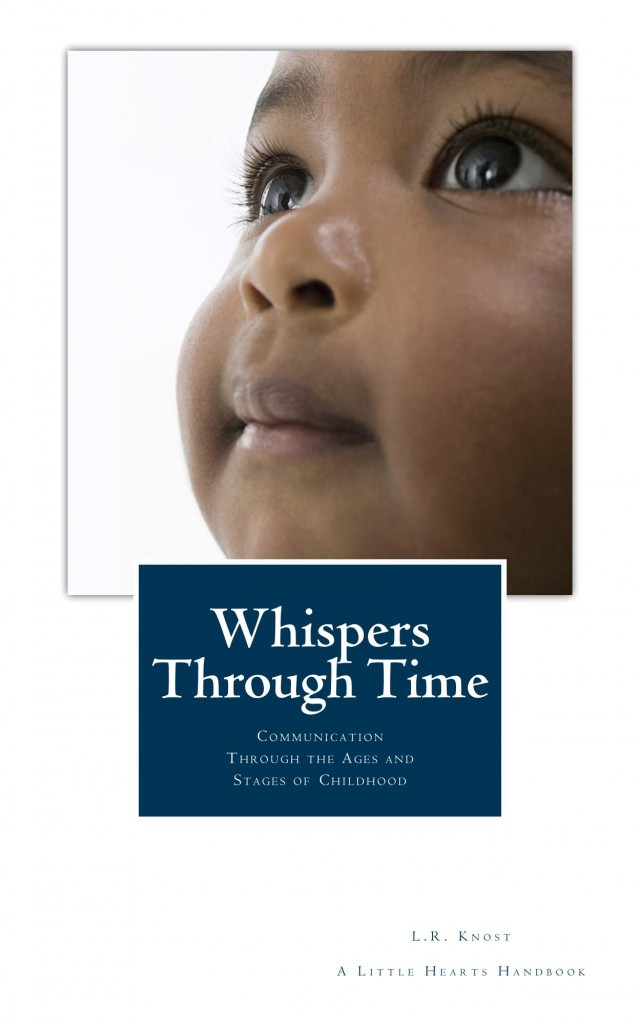‘Encouraging Safe Negative Emotional Expression (i.e. Stopping the Peeing, Spitting & Kicking)’ by Guggie Daly – Friends of L.R.Knost Rock the Guest Posts while She Battles Cancer
 A common stage that can start around age 2 but typically peaks by age 4 is the passive aggressive communication of negative feelings. This stage occurs on its own as a normal milestone because the child needs to develop verbal skills and emotional intelligence. But, for some children, the stage can be especially difficult due to various factors.
A common stage that can start around age 2 but typically peaks by age 4 is the passive aggressive communication of negative feelings. This stage occurs on its own as a normal milestone because the child needs to develop verbal skills and emotional intelligence. But, for some children, the stage can be especially difficult due to various factors.
First, if the child has been emotionally invalidated frequently by other caregivers or cherished peers, this behavior might become a way to passively share emotions or cry out for help, or even attempt to take back some semblance of control. Watch out for common invalidating comments. Take steps to remind the adult that your child is learning and respect is required. Briefly but firmly reassure the child when invalidation occurs. Some examples of emotional invalidation:
Oh, you’re ok! Stop crying about it.
Hey! There’s no reason to be angry about that, quit it.
Oh, you’re being a scaredy cat. That’s not scary at all.
Why are you crying over such a silly thing? Don’t be a baby.
I don’t care if that makes you angry. That doesn’t matter.
I can’t stand when you cry like that. Knock it off already.
Your brother isn’t scared of the dark. Why don’t you be like him?
Besides directly hurting the child, invalidating situations deprive the child of an opportunity to practice emotional processing and emotional regulation. It’s a loss of skill development. Try whenever possible to defend your child from invalidation.
Second, if the child is experiencing any language difficulties or delays, or other circumstances and conditions that interfere with easy verbal communication such as hearing difficulties, autism, hyperactivity, etc, then this stage can persist because it is simply easier to communicate physically. Or it might be impossible from the child’s perspective to communicate in ways society deems appropriate. In these cases, removing the obstacle when possible and working on coping skills can help create a bridge from the physical outbursts to safer expression.
When your child only expresses negative emotions in your presence
Many parents report that their children do not act out at school, daycare, the other parent’s home, in front of peers, etc. But, seemingly the moment they get home, suddenly the children are throwing things, screaming, spitting, wetting their pants…why the sudden change?
If your child only expresses negative emotions in your presence, or in specific areas such as only at home, this is a sign that she feels safest with you. It’s not a bad sign. It doesn’t mean she’s taking advantage of you or that you’re too soft on her. On the contrary, it means she has big emotions boiling up inside her and she only trusts you to see them.
Think about it. If you’re really stressed out about something you feel is perhaps slightly embarrassing (read: invalidating or shamed by others) you probably keep it hidden. You don’t cry your eyes out at work. You don’t curse and go on about someone who hurt you at the playground. You wait until you’re home and with a safe person to finally let go of your feelings. Children do this, too. And if your child is doing this frequently, it could be a sign that he feels shamed, judged, or invalidated. Remember this when you are facing frustrating behavior, so that you can respond in a way that builds the trust while developing the communication skills.
When your child begins to use emotional outbursts to exert control
Children who feel stifled emotionally can feel powerless. This can cause intense feelings of resentment and anxiety. The child is stuck experiencing what feels like a very large crisis, but the adults around him ignore it or punish him if he lets them know about it. He’s new to the world and has very few skills for handling it, so he’s lost in himself and lost to others.
As he begins to act out, he comes to find that certain ways of expressing his emotion not only feel good, letting off steam and relieving that anxiety inside him, but might also cause a reaction in others. If it feels good and gets him what he wants, it must be a good idea to keep using it!
Suddenly, you have a child who spits on you when she’s angry or pees her pants when she’s rejected. Who throws toys at children at the park when she feels left out or pretends to choke on food she doesn’t like.
Emotions don’t just melt away. They will find their way out, and in children who haven’t developed healthy emotional skills, they will come out in ways we dislike. Ways that might hurt others or cause negative reactions. Ways that tempt us to rain down punishment and consequences.
If your child is falling back on crude emotional expression to get your attention, it’s a sign that she needs your help, not punishment at this time. No, I’m not saying to condone the behavior or to go all wishy-washy. I’m warning against hyper focusing on the negative behavior to the point that skill-building is squeezed out. Even if the child is punished enough to be convinced to stop the emotional outburst, she still needs to learn healthy ways to process and express her emotions. The need is still there. Start processing with her.
Great. So how is this done?
Let’s use a real life example of a 3 year old who is fully potty trained and does not wet her pants at preschool or with her father. But, she frequently wets her pants when with her mother. Not only does this warn us that she feels safe in her mother’s presence and that she has some big emotions building up inside her, but the child has also begun to use the emotional outbursts to cause reactions in others.
For example, when the mother walked away from the 3 year old to care for the baby, the 3 year old wet her pants.
At this point, a lot of different approaches could be taken ranging from shaming and punishment to completely ignoring it and remaining emotionless while cleaning up the mess. These are merely superficial responses, however, and do nothing to encourage her to develop emotional skills.
Let’s say the mother has just come back from caring for the baby and the 3 year old is sitting on the floor with wet pants and with an angry and slightly rejected expression on her face. What does the mom do for her?
She gets down on one knee, moving close to her, making eye contact and making physical contact such as by touching her arm gently. While keeping physical and eye contact, she begins assessing the situation.
Hey. I see that you peed in your pants. You must be feeling pretty embarrassed right now. Can you use your words to tell me why you peed your pants? Pause for response. You were feeling angry because I left you to help the baby, huh. It made your heart hurt? Pause for response.
You know, it’s okay to feel angry. That’s a strong feeling, but it doesn’t make you a bad person. Everyone feels angry sometimes. When I feel angry, it makes my stomach squeeze. What does it feel like for you? Pause for response.
Next time when you feel angry, I want you to use your words to tell me. Say, “I’m angry!” Let’s try it right now. Ready? Tell me! Pause for response. Remember, instead of peeing your pants, it’s okay to tell me that you’re angry. I’ll always listen to you.
And if you begin to recognize individual triggers, briefly remind her before they happen:
I’m going to focus on caring for your sister right now. Remember, if you feel alone, come grab my hand and tell me instead of peeing your pants.
I’m going to leave the room to make dinner. If you feel scared inside, come and get me, ok? Remember to keep your pants dry.
Tonight, we’re going to be very busy with the baby at the park. If you start to feel angry, be sure to tell me with your big girl words! I will listen.
Remember to keep it as simple or long as needed, pausing when needed and following cues to go where the conversation leads you. As children begin to realize how much connection they can make with words, lots of thoughts might tumble out in little situations like this. Try to listen intently and to provide a safe place for those emotions to come out.
Guggie Daly, taking a break from her studies in neuroscience to care for her four young children, hopes to share relevant, up to date information with other parents so that they can take advantage of foresight and not live with hindsight. You can find more information on her blog at Guggie Daly: Empowering Information and on Facebook at The Guggie Daily.
Related posts:
 Award-winnning author, L.R.Knost, is the founder and director of the children's rights advocacy and family consulting group, Little Hearts/Gentle Parenting Resources, and Editor-in-Chief of Holistic Parenting Magazine. Books by L.R.Knost include Whispers Through Time: Communication Through the Ages and Stages of Childhood ; Two Thousand Kisses a Day: Gentle Parenting Through the Ages and Stages ; The Gentle Parent: Positive, Practical, Effective Discipline ; and Jesus, the Gentle Parent: Gentle Christian Parenting the first four books in the Little Hearts Handbook gentle parenting series, and children’s picture books Petey’s Listening Ears and the soon-to-be-released Grumpykins series.
Award-winnning author, L.R.Knost, is the founder and director of the children's rights advocacy and family consulting group, Little Hearts/Gentle Parenting Resources, and Editor-in-Chief of Holistic Parenting Magazine. Books by L.R.Knost include Whispers Through Time: Communication Through the Ages and Stages of Childhood ; Two Thousand Kisses a Day: Gentle Parenting Through the Ages and Stages ; The Gentle Parent: Positive, Practical, Effective Discipline ; and Jesus, the Gentle Parent: Gentle Christian Parenting the first four books in the Little Hearts Handbook gentle parenting series, and children’s picture books Petey’s Listening Ears and the soon-to-be-released Grumpykins series.
’12 Ways to Get Past No’ by Dr. Laura Markham – Friends of L.R.Knost Rock the Guest Posts while She Battles Cancer
“2 year-olds argue with their parents 20 to 25 times an hour.” — Study reported in Child Development Magazine
Between 11 and 15 months, we learn a wonderful word: “No!”
 It’s an ecstatic discovery. We learn we are separate, autonomous beings with a will of our own who can impact what happens in the world. We delight in saying, “No!” at every opportunity.
It’s an ecstatic discovery. We learn we are separate, autonomous beings with a will of our own who can impact what happens in the world. We delight in saying, “No!” at every opportunity.
Our “No” is actually a big “YES!”
It’s an awesome, pure expression of our life force.
After the first cute “No” or two, our parents are usually less than delighted. In fact, this developmental stage launches what’s often called the “terrible twos.” Rarely are our ecstatic expressions of primal life force affirmed. Do you remember your father or mother saying:
“I love your independence and autonomy!”
“I see that you’re learning to stand up for your own truth, which will really help you later in life.”
More common messages are along the lines of:
“Don’t you dare talk back to me!”
“We’ll nip this in the bud!”
There may be the threat—or the reality—of punishment or physical force. There is almost always the withdrawal of love, as parents walk away when little ones tantrum–the only way they know to make their No heard.
Being powerless and utterly dependent, we soon learn to hide our No’s. We begin to resort to whining, passive resistance, and manipulation. By the time we reach adulthood, we’ve often lost touch with our own needs.
So when our little one falls in love with the word NO, danger signs flash inside us. We know that NO is dangerous, even if we don’t know why. We think we MUST teach him who’s in charge, right away. Defiance from our child, whether two or twelve, is met with an emotional slap-down as we put him in his place.
The problem is that defiance is a sign that your child is having a problem. When we just rush in with an iron fist, we don’t address the real issue. Which might be that she feels you aren’t listening. Or that she needs your help to cry. Or that she needs you to teach her how to express her needs and wants without attacking the other person. Or maybe she feels she’s sticking up for her integrity.
If she’s a tween or teen, that should make you rejoice. Research shows that teens who are willing to stand up to their parents are also more likely to stand up to their peers. (After all, she could just lie to avoid a confrontation, which is what most teens do.) And kids who can stand up for their own truth start as toddlers.
So even though you get triggered, this isn’t about who is in charge. Your child knows you’re in charge. This is about your child’s right to his feelings, even while you honor your responsibility to keep him safe and healthy.
It IS possible to say “No” in a way that honors your own truth, while still staying in positive contact with your child. It IS possible to honor both your needs and your child’s age-appropriate need to assert herself. The secret?
1. Stop seeing your child’s NO as something you need to overcome. Instead, see it as a YES offering in a duet dance of negotiation. Every dance is a chance to partner with your child, and that foundation of partnership will create more joy — not to mention better behavior–in the years ahead.
2. Don’t take it personally. Your child is allowed to have a different view than yours. Her willingness to be different is a strength you want to nurture.
3. Listen to your child’s No. “You’re saying NO, No bath! I hear you!” Sometimes being heard is all our child needs. And the more your child feels seen, heard and acknowledged, the less he’ll need to get your attention by being contrary.
4. Listen to the YES behind the NO. “You love playing with the toy horse; you don’t want to stop for a bath, right? That’s okay, you can keep right on playing with the horses… Let’s gallop them into the bathroom! They’re all dusty from riding all day!”
5. Sidestep the NO! by making your request an invitation to play. The secret to smooth transitions is using yourself as the bridge, and no child can refuse your invitation to play. “Climb on my back, Cowboy, we’re headed for the bathtub in the hills!”
6. Sidestep the NO! by giving your child a choice. Win-win solutions mean you both get what you need. “NO bath? Maybe you and the horses need to be hosed down in the kitchen sink?” Who cares where he gets clean?
7. Sidestep the NO! by honoring his autonomy without giving up your request. “NO Bath right now? Ok, Sweetie. We’ll wait five minutes. Then you may look at the plastic containers in the kitchen and be in charge of which ones you want to play with in the tub.” Telling your child he “may” do something is magic. You won’t be able to restrain him from the bath.
8. Join the No. In a joking voice: “Whatever you do, DON’T get in the bathtub. NO, NO, NO, don’t turn on the water!! NO, NO, NO, don’t take off your clothes!!”
9. Honor the autonomy under the NO.”Want to be in charge of turning on the water and deciding what toys go in the bath? Who should take your clothes off?”
10. Teach your child to express his needs without attacking you. “You sound worried…Oh, you’re worried about that song about the child who goes down the bathtub drain? Don’t worry, you can be in charge of the plug. We won’t pull it out until you’re out of the tub, and then you can watch the water go down. You’ll see that only water can fit.”
11. Just say YES! Match the exuberance of your YES! to your child’s No. Trust yourself to find a way to make both you and your child happy by responding to her No with all the Yes energy you can summon. “YES, it’s time for your bath, and YES you can bring your horses, and YES you can ride on my back up the stairs on my back up the stairs, and YES I love you so much and YES, LET”S GO!” Your child will match your generosity of spirit.
12. Honor the disappointment when you can’t agree with the No. When you need to put your foot down, you can say your No with empathy and compassion for your child. “I’m sorry, Sweetie, it’s time. That makes you sad, I see. You wish you could play more. I bet when you grow up you’ll play all night, every night, won’t you?” (That will get a yes!)
These examples are all from the toddler years, but if you start off raising your child this way, you’ll raise a tween and teen who can stand firm in his own integrity while he respects yours.
Remember that you can always find a way to meet both your needs. If you keep your sense of humor, and honor both your own NO and your child’s, you can always find a way to get past the word NO — to the YES! energy right behind it.
Dr. Laura Markham is the author of Peaceful Parent, Happy Kids: How To Stop Yelling and Start Connecting. You can get her free coaching posts right in your In Box at AhaParenting.com.
Related posts:
- ‘5 Keys to Setting Limits that Minimize Tantrums and Meltdowns’ by Amy Bryant – Friends of L.R.Knost Rock the Guest Posts while She Battles Cancer
- ‘What I Believe He Will Believe’ by Abby Theuring, MSW – Friends of L.R.Knost Rock the Guest Posts while She Battles Cancer
- My Cancer Story, Part 1: The Diagnosis
 Award-winnning author, L.R.Knost, is the founder and director of the children's rights advocacy and family consulting group, Little Hearts/Gentle Parenting Resources, and Editor-in-Chief of Holistic Parenting Magazine. Books by L.R.Knost include Whispers Through Time: Communication Through the Ages and Stages of Childhood ; Two Thousand Kisses a Day: Gentle Parenting Through the Ages and Stages ; The Gentle Parent: Positive, Practical, Effective Discipline ; and Jesus, the Gentle Parent: Gentle Christian Parenting the first four books in the Little Hearts Handbook gentle parenting series, and children’s picture books Petey’s Listening Ears and the soon-to-be-released Grumpykins series.
Award-winnning author, L.R.Knost, is the founder and director of the children's rights advocacy and family consulting group, Little Hearts/Gentle Parenting Resources, and Editor-in-Chief of Holistic Parenting Magazine. Books by L.R.Knost include Whispers Through Time: Communication Through the Ages and Stages of Childhood ; Two Thousand Kisses a Day: Gentle Parenting Through the Ages and Stages ; The Gentle Parent: Positive, Practical, Effective Discipline ; and Jesus, the Gentle Parent: Gentle Christian Parenting the first four books in the Little Hearts Handbook gentle parenting series, and children’s picture books Petey’s Listening Ears and the soon-to-be-released Grumpykins series.
Jesus, the Gentle Parent: Gentle Christian Parenting
Jesus, the Gentle Parent: Gentle Christian Parenting
by
L.R.Knost
Intelligent, Well-Researched, Compassionate ~ L.R.Knost has done it again. With her compassionate tone, relational style, and intelligent, well-researched writing, Jesus, the Gentle Parent is like a refreshing, peaceful  walk through the scriptures with a friendly and knowledgeable tour guide. This book differs from Two Thousand Kisses a Day, Whispers Through Time, and The Gentle Parent: Positive, Practical, Effective Discipline in that it takes a Christian approach to parenting as L.R. takes on big names in the Christian child-training sect such as Dr. James Dobson, Tedd Tripp, Gary Ezzo, and Michael Pearl, breaking down their doctrine and reexamining such issues as spanking, instant obedience, submission, free will, and more in light of the original Hebrew and Greek texts of the scriptures. As always, L.R. offers gentle parenting alternatives along with real-life examples of their applications, but in Jesus, the Gentle Parent she goes even further and shares parenting insights based on the life of Jesus that will turn the mainstream Christian world on its head. This is truly a grace-based parenting book which shows parents how to be “their children’s first taste of God” by following in the gentle, wise, grace-filled footsteps of Jesus. ~ The Parenting Review
walk through the scriptures with a friendly and knowledgeable tour guide. This book differs from Two Thousand Kisses a Day, Whispers Through Time, and The Gentle Parent: Positive, Practical, Effective Discipline in that it takes a Christian approach to parenting as L.R. takes on big names in the Christian child-training sect such as Dr. James Dobson, Tedd Tripp, Gary Ezzo, and Michael Pearl, breaking down their doctrine and reexamining such issues as spanking, instant obedience, submission, free will, and more in light of the original Hebrew and Greek texts of the scriptures. As always, L.R. offers gentle parenting alternatives along with real-life examples of their applications, but in Jesus, the Gentle Parent she goes even further and shares parenting insights based on the life of Jesus that will turn the mainstream Christian world on its head. This is truly a grace-based parenting book which shows parents how to be “their children’s first taste of God” by following in the gentle, wise, grace-filled footsteps of Jesus. ~ The Parenting Review
Back cover: In this examination of mainstream Christian parenting practices and the doctrinal beliefs behind them, best-selling author, L.R.Knost, debunks common cultural and theological beliefs about spanking, original sin, sin nature, submission, authority, obedience, breaking a child’s will, and more, along with providing grace-filled, gentle solutions to behavior issues.
Here’s a bit from the foreword by Samuel S. Martin (Biblical scholar and author residing in Israel):
“Jesus, the Gentle Parent is a book to read, reread, and internalize.
In these pages, you will find keen insights and powerful Scriptural truths which I am only beginning to grasp the significance of, myself. Before agreeing to write the foreword for Jesus, The Gentle Parent, I carefully read and examined how L.R. had engaged the subject, and I can say without hesitation that I am a better person, a better father, a better human being, and a better Christian for doing so.
I come from a background of high academic achievement in the area of Biblical studies. My late father, Dr. Ernest L. Martin (1932-2002) was one of the founding members of the Foundation for Biblical Research and an internationally recognized Biblical scholar with multiple books and academic credits to his name.
Growing up, I lived in Israel (my permanent adult residence since 2001) for five summers, living in the Bible lands while my father was involved in the largest excavation taking place in the Middle East at that time. For my summer vacations, I toured Biblical sites in Israel as well visiting Greece and seeing where St. Paul journeyed.
I grew up in a house with a room dedicated to my father’s library which numbered over 10,000 volumes when he passed away. These are the tools that I was taught to use. I’ve been exercising these tools now for some twenty years as I have studied and written exhaustively about doctrinal issues, including publishing a book on corporal punishment (spanking) in the Bible in the hope of shedding new light on that issue.”
Check out Samuel Martin’s book: Thy Rod and Thy Staff, They Comfort Me: Christians and the Spanking Controversy
Other gentle parenting resources you may find helpful:
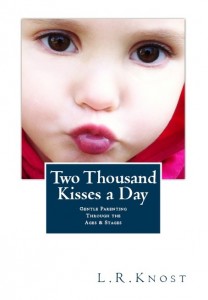 Two Thousand Kisses a Day: Gentle Parenting Through the Ages and Stages Calm, Reassuring, Likable ~ Written in L.R.Knost’s signature easy-to-read and conversational style, ‘Two Thousand Kisses a Day’ offers an overview of gentle parenting from birth through young adulthood along with concrete suggestions and insights into how to implement gentle parenting in each stage of childhood. Her seasoned and practical approach based on extensive child development research and years of parent mentoring as well as over twenty-five years of parenting her six children is as likable as it is reassuring. Parents with children of any age will find this information-packed book with its bite-sized chapters and practical approach to parenting a helpful and encouraging addition to their home library, as well as a welcome gift for new or struggling parents. ~The Parenting Review
Two Thousand Kisses a Day: Gentle Parenting Through the Ages and Stages Calm, Reassuring, Likable ~ Written in L.R.Knost’s signature easy-to-read and conversational style, ‘Two Thousand Kisses a Day’ offers an overview of gentle parenting from birth through young adulthood along with concrete suggestions and insights into how to implement gentle parenting in each stage of childhood. Her seasoned and practical approach based on extensive child development research and years of parent mentoring as well as over twenty-five years of parenting her six children is as likable as it is reassuring. Parents with children of any age will find this information-packed book with its bite-sized chapters and practical approach to parenting a helpful and encouraging addition to their home library, as well as a welcome gift for new or struggling parents. ~The Parenting Review
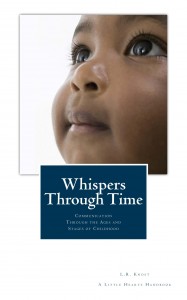 Whispers Through Time: Communication Through the Ages and Stages of Childhood Sweet, Funny, Insightful ~ Award-winning ‘Whispers Through Time’ by L.R. Knost is destined to be a dog-eared favorite, passed down from generation to generation. L.R. Knost shows parents how to find their own answers for their own children and their own families in this guidebook as she challenges conventional thinking with a wisdom born of experience and a healthy dose of research to back it up. Written with the same unique blend of sweetness and humor, grit and honesty, reassurance and insight that made L.R. Knost’s first book, ‘Two Thousand Kisses a Day: Gentle Parenting Through the Ages and Stages,’ a best-seller, ‘Whispers Through Time’ has become a runaway hit in its own right. ~The Parenting Review
Whispers Through Time: Communication Through the Ages and Stages of Childhood Sweet, Funny, Insightful ~ Award-winning ‘Whispers Through Time’ by L.R. Knost is destined to be a dog-eared favorite, passed down from generation to generation. L.R. Knost shows parents how to find their own answers for their own children and their own families in this guidebook as she challenges conventional thinking with a wisdom born of experience and a healthy dose of research to back it up. Written with the same unique blend of sweetness and humor, grit and honesty, reassurance and insight that made L.R. Knost’s first book, ‘Two Thousand Kisses a Day: Gentle Parenting Through the Ages and Stages,’ a best-seller, ‘Whispers Through Time’ has become a runaway hit in its own right. ~The Parenting Review
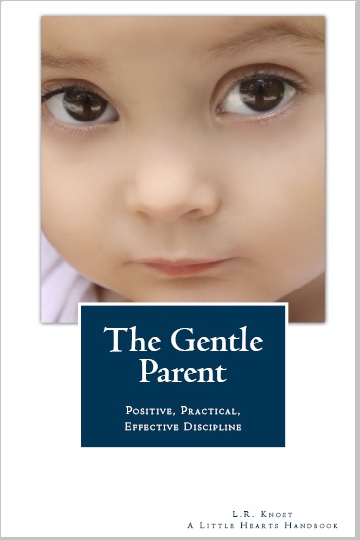 The Gentle Parent: Positive, Practical, Effective Discipline Relaxed, Reassuring, Practical ~ Written by L.R.Knost, best-selling, award-winning author of ‘Two Thousand Kisses a Day’ and ‘Whispers Through Time,’ ‘The Gentle Parent: Positive, Practical, Effective Discipline’ shares the simple secrets of a peaceful, happy home in the Three C’s of gentle discipline–Connection, Communication, and Cooperation. In her signature relaxed and poetic style, L.R.Knost gently guides parents through the steps of applying the Three C’s in real-life scenarios from tantrums to defiance to parenting a strong-willed child to healing a broken parent/child relationship. Practical and proven, this newest installment in the Little Hearts Handbook parenting series will be tucked into diaper bags, kept handy on nightstands, and shared with good friends for its research-backed, experience-based, and humor-rich insights, ideas, and inspiration. ~The Parenting Review
The Gentle Parent: Positive, Practical, Effective Discipline Relaxed, Reassuring, Practical ~ Written by L.R.Knost, best-selling, award-winning author of ‘Two Thousand Kisses a Day’ and ‘Whispers Through Time,’ ‘The Gentle Parent: Positive, Practical, Effective Discipline’ shares the simple secrets of a peaceful, happy home in the Three C’s of gentle discipline–Connection, Communication, and Cooperation. In her signature relaxed and poetic style, L.R.Knost gently guides parents through the steps of applying the Three C’s in real-life scenarios from tantrums to defiance to parenting a strong-willed child to healing a broken parent/child relationship. Practical and proven, this newest installment in the Little Hearts Handbook parenting series will be tucked into diaper bags, kept handy on nightstands, and shared with good friends for its research-backed, experience-based, and humor-rich insights, ideas, and inspiration. ~The Parenting Review
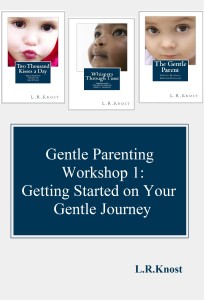 Gentle Parenting Workshop 1: Getting Started on Your Gentle Journey The Gentle Parenting Workshop series from award-winning author, L.R.Knost, is a companion series to her best-selling parenting books, ‘Two Thousand Kisses a Day,’ ‘Whispers Through Time,’ and the newest release, ’The Gentle Parent.’ This first workshop in the series, ‘Gentle Parenting Workshop 1: Getting Started on Your Gentle Journey,’ will help you set your gentle parenting goals, identify specific parenting problems, and target practical solutions to help you along on your journey to gentle parenting.
Gentle Parenting Workshop 1: Getting Started on Your Gentle Journey The Gentle Parenting Workshop series from award-winning author, L.R.Knost, is a companion series to her best-selling parenting books, ‘Two Thousand Kisses a Day,’ ‘Whispers Through Time,’ and the newest release, ’The Gentle Parent.’ This first workshop in the series, ‘Gentle Parenting Workshop 1: Getting Started on Your Gentle Journey,’ will help you set your gentle parenting goals, identify specific parenting problems, and target practical solutions to help you along on your journey to gentle parenting.
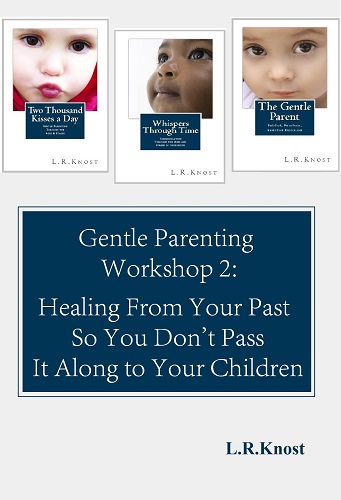 Gentle Parenting Workshop 2: Healing from Your Past so You Don’t Pass it Along to Your Children, will help you walk through the steps of recovery from a painful past, leading you on a journey of healing and forgiveness, of unloading negative emotional baggage into the past where it belongs instead of unloading it onto your children and passing it along to the next generation, and of renewal to open the pathway to a more peaceful and gentle approach to parenting.
Gentle Parenting Workshop 2: Healing from Your Past so You Don’t Pass it Along to Your Children, will help you walk through the steps of recovery from a painful past, leading you on a journey of healing and forgiveness, of unloading negative emotional baggage into the past where it belongs instead of unloading it onto your children and passing it along to the next generation, and of renewal to open the pathway to a more peaceful and gentle approach to parenting.
“Forgiving someone doesn’t mean telling them that hurting us was okay. It means telling ourselves that it’s okay to stop hurting. It doesn’t mean we have to trust them again. It means we can learn to trust ourselves again because we deserve it. It doesn’t mean we have to give them a free pass back into our lives. It means we are free to take our lives back again. Forgiving is letting the hurts of the past go so that we can move freely into the future.”
The Gentle Parenting Workshop 2 walks you through five stages of healing and emotional freedom, including multiple action steps for you to take along the way from making the decision to change to identifying your triggers to forgiving your own mistakes of the past to coping when life hits hard.
“When a tragedy strikes in the form of a death or a life-changing illness or an accident, or when our lives are suddenly turned upside-down due to a divorce or other major life event, we need to grieve the loss of our old lives, our old ‘normal,’ our younger, more carefree, and unwounded selves, so that we can embrace our new normal and learn to live fully and joyfully again. Just as if a person had hurt us, we are hurting humans and we need to take the time and make the investment in self-care to work through the hurt and emerge a wiser, more mature, and more compassionate human.”
 Award-winnning author, L.R.Knost, is the founder and director of the children's rights advocacy and family consulting group, Little Hearts/Gentle Parenting Resources, and Editor-in-Chief of Holistic Parenting Magazine. Books by L.R.Knost include Whispers Through Time: Communication Through the Ages and Stages of Childhood ; Two Thousand Kisses a Day: Gentle Parenting Through the Ages and Stages ; The Gentle Parent: Positive, Practical, Effective Discipline ; and Jesus, the Gentle Parent: Gentle Christian Parenting the first four books in the Little Hearts Handbook gentle parenting series, and children’s picture books Petey’s Listening Ears and the soon-to-be-released Grumpykins series.
Award-winnning author, L.R.Knost, is the founder and director of the children's rights advocacy and family consulting group, Little Hearts/Gentle Parenting Resources, and Editor-in-Chief of Holistic Parenting Magazine. Books by L.R.Knost include Whispers Through Time: Communication Through the Ages and Stages of Childhood ; Two Thousand Kisses a Day: Gentle Parenting Through the Ages and Stages ; The Gentle Parent: Positive, Practical, Effective Discipline ; and Jesus, the Gentle Parent: Gentle Christian Parenting the first four books in the Little Hearts Handbook gentle parenting series, and children’s picture books Petey’s Listening Ears and the soon-to-be-released Grumpykins series.
Parenting in Public: Toddler Time!
[Reprinted from The Gentle Parent: Positive, Practical, Effective Discipline by L.R.Knost. Whispers Through Time: Communication Through the Ages and Stages of Childhood and Two Thousand Kisses a Day: Gentle Parenting Through the Ages and Stages also available on Amazon and through other major retailers.]
 You’re sitting in a restaurant waiting the prerequisite ten to fifteen minutes for your food to be served, chatting quietly with your spouse and two-year-old, when it happens, that dreaded moment that every parent fears…the sudden switch from table companion to meltdown mayhem when life as you and every patron, staff member, and passerby know it is turned inside out and upside down.
You’re sitting in a restaurant waiting the prerequisite ten to fifteen minutes for your food to be served, chatting quietly with your spouse and two-year-old, when it happens, that dreaded moment that every parent fears…the sudden switch from table companion to meltdown mayhem when life as you and every patron, staff member, and passerby know it is turned inside out and upside down.
That moment is known as ‘Toddler Time’ which is aptly named because it is, in fact, all about time from the perspective of a toddler. That insignificant ten to fifteen minute waiting period for food to arrive is actually eons in toddler time, eons of hunger, eons of boredom, eons of stillness, eons of being expected to act like the adult that they are years and years (eons!) away from becoming. But you really don’t want to be housebound for all of those eons, right? And yet more and more public places are becoming child un-friendly with snarky signs saying they’ll give your child an espresso and a pony if you don’t control them, or charge you extra if you dare to enter their establishment and support their business with your hard-earned money, or even flat out ban you altogether if you bring ‘the beast’ out in public with you!
And what about those hazy, lazy summer days at the park with the laughter of children floating in the air, mommies wearing sleeping babies in their carriers while chatting and keeping eagle eyes on their precious little monkeys dangling from brightly colored jungle-gyms, when the dreaded moment suddenly hits, and all goes quiet as every eye turns toward the poor soul who called out those awful, awful words, “It’s time to go!” The words echo against the lowering sky, which has conveniently decided to threaten rain just to add to the sheer madness of the moment, and then the shrieking begins. In toddler time, an hour at the park is gone in the blink of an eye, and fun things like being strapped into car seats and baths and naps awaiting at home just add insult to injury.
So what’s a parent to do?
Here are a few preemptive tools for your gentle parenting toolbox:
- Gather a few special ‘quiet’ toys and keep them in a Quiet Bag in the car. To keep their novelty value, only get them out when you go into a store or restaurant and let your little one play with one toy at a time until it’s time to go, saving one last special toy for the car ride home. Some ideas for stocking your Quiet Bag are
- felt busy books
- playdoh
- picture books
- white-erase boards
- coloring books
- small, unlined notebooks
- crayons or washable markers
- mini stuffed animals
- small play figures such as superheroes, dollhouse dolls, cars, trucks, etc.
- chunky, age-appropriate puzzles
- Calm-Me-Jar
- Making a habit out of wearing your little one or letting them ride in a cart or stroller while in stores and keeping them happily occupied while secured in a highchair or on your lap when in restaurants are proactive steps that will help prevent issues with running around and getting into things.
- Keeping your little person occupied is always a good place to start, but if yelling or screaming still become an issue, try responding with a whispered question or two. It’s pretty much irresistible for little ones to quiet down to hear what you’re saying, and even better if what you’re saying is super silly…”I think my nose went outside for a walk.” (with a conspiratorial ‘shared secret’ look) “Could you check for me to see if it’s back yet?” (crossing your eyes to see for yourself)
- With the dreaded leaving-the-park issue, try bringing snacks your small one loves, and instead of saying “Time to go!” try saying “Snack time!” and describe the yumminess waiting for them, all the while gently guiding them to the car. Or brainstorm with your little one ahead of time to come up with a fun activity to do after the park like playing a favorite game together or stopping by the library to pick up a new book to read together. The idea is to involve your toddler in the planning so they feel like they have some control over their lives and also to have something fun to look forward to that will help them through transitions (which are always hard for little ones).
- Don’t forget to pack your ‘funnybone’ for a back-up plan! Humor is a powerful parenting tool, and car seats presented as rocket ships to the moon, shared naptimes (parents can always use the extra sleep!) on marshmallow planets, highchair-bound movie directors with mommy and daddy as the actors, and shopping carts cars that continually stall and need to be fixed by their little riders are all inventive ways of keeping little people too busy and happy to meltdown. (Not to mention that these are great ways to reconnect with your little one and remember just how adorable they really are!)
Actively work at avoiding confrontations and meltdowns by giving choices, staying engaged, listening to your child, and paying attention to triggers such as hunger, tiredness, sickness, etc. When our parenting goals shift from meeting needs and guiding actions to controlling our children, they invariably rebel and the battle is on, not a happy circumstance at any time, but especially difficult to handle in public! (And, in the long run, that makes for an ‘us against them’ relationship that sets the stage for an unhappy home, particularly when the teen years arrive.)
Related posts:
Toddlers, Tantrums, and Time-in’s, Oh my!
The Gift of a Strong-Willed Child
Backtalk is Communication…LISTEN
When Children Act Out ~ Reflecting Our Emotions
Bridge Over Troubled Waters~Parenting a ‘Problem’ Child
The Taming of the Tantrum: A Toddler’s Perspective
Practical, Gentle, Effective Discipline
200 Ways to Bless Your Children with a Happy Childhood
When Children Hit~10 Tips for Parents
 Award-winnning author, L.R.Knost, is the founder and director of the children's rights advocacy and family consulting group, Little Hearts/Gentle Parenting Resources, and Editor-in-Chief of Holistic Parenting Magazine. Books by L.R.Knost include Whispers Through Time: Communication Through the Ages and Stages of Childhood ; Two Thousand Kisses a Day: Gentle Parenting Through the Ages and Stages ; The Gentle Parent: Positive, Practical, Effective Discipline ; and Jesus, the Gentle Parent: Gentle Christian Parenting the first four books in the Little Hearts Handbook gentle parenting series, and children’s picture books Petey’s Listening Ears and the soon-to-be-released Grumpykins series.
Award-winnning author, L.R.Knost, is the founder and director of the children's rights advocacy and family consulting group, Little Hearts/Gentle Parenting Resources, and Editor-in-Chief of Holistic Parenting Magazine. Books by L.R.Knost include Whispers Through Time: Communication Through the Ages and Stages of Childhood ; Two Thousand Kisses a Day: Gentle Parenting Through the Ages and Stages ; The Gentle Parent: Positive, Practical, Effective Discipline ; and Jesus, the Gentle Parent: Gentle Christian Parenting the first four books in the Little Hearts Handbook gentle parenting series, and children’s picture books Petey’s Listening Ears and the soon-to-be-released Grumpykins series.
Reading Challenge 2014!
[Portions reprinted from Raising Bookworms: Life, Learning, and Literacy by L.R.Knost available 2014; Two Thousand Kisses a Day: Gentle Parenting Through the Ages and Stages, Whispers Through Time: Communication Through the Ages and Stages of Childhood, and The Gentle Parent: Positive, Practical, Effective Discipline now available on Amazon]
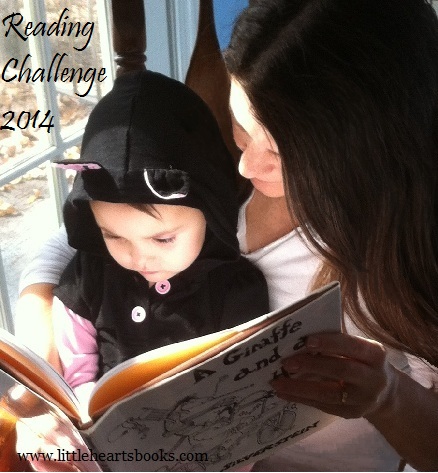 Experts agree that the single best way to turn children on to a life-long love of reading is to simply read to them. Not only is reading to our little ones wonderful for their education, though, but it is also a fun and easy way to build and maintain a strong parent/child connection. Let’s join together this year and commit to reading to our children (or with them if they’re older!) every day of 2014.
Experts agree that the single best way to turn children on to a life-long love of reading is to simply read to them. Not only is reading to our little ones wonderful for their education, though, but it is also a fun and easy way to build and maintain a strong parent/child connection. Let’s join together this year and commit to reading to our children (or with them if they’re older!) every day of 2014.
Old books, new books, read books, glued books (a nod to my favorite children’s author, Dr. Seuss!), it doesn’t matter what you read. Just read! Read old familiar books your children ask for over and over and over. Read new books you check out from the library or buy from your local independent bookstore. Read books from your own childhood that are passed down through your family. Read books you write together with your children and glue into construction paper pages tied together with yarn. Just read, read, read! (And stop back by and leave a comment with an update now and then to share how you’re doing and which books are your children’s favorites!)
Here are a few links to some book lists to get you started:
Bookworm weighs in on must-have books for your children in Little Hearts’ How to Build a Home Library for Bookworms from Tots to Teens series. Check out…
25 Must-Have Books for Baby Bookworms
25 Must-Have Books for Toddler Bookworms
25 Must-Have Books for Preschool Bookworms
For more ideas about sharing a love of learning with your children, here is my virtual reading room, its bookshelves filled with literacy tips, book recommendations, literary quotes, learning through play ideas, and more. Pour yourself a cup of coffee, grab a cozy chair, and join me on the journey of a lifetime…
- When it comes to reading, do you want your children to become readers or just learn the mechanics of reading? Do you want them to love to read or just to know how? If a love of reading is your goal for your children, here are some ideas to get you started… 8 Tips for Raising Bookworms
- Fairy tales in childhood are stepping-stones throughout life, leading the way through trouble and trial. The value of fairy tales lies not in a brief literary escape from reality, but in the gift of hope that goodness truly is more powerful than evil and that even the darkest reality can lead to a Happily Ever After. Do not take that gift of hope lightly. It has the power to conquer despair in the midst of sorrow, to light the darkness in the valleys of life, to whisper “One more time” in the face of failure. Hope is what gives life to dreams, making the fairy tale the reality. Fairy Tales~The Lost Value of ‘Once upon a time…’
- Imagination is the language of childhood, so speaking their language when introducing our language only makes sense. Let’s ditch the flashcards, turn off the educational dvd’s, and throw out the worksheets…because learning is child’s play! Alphabet Fun~Imagination From A to Z!
- Successful reading means far more than possessing the ability to read. Engaging the hearts of students moves reading success beyond a life skill and turns it into a life style. And graphic novels are too powerful of a tool in our arsenal to be disregarded because of pride or prejudice… Raising Super Readers~The MARVELous Power of Comic Books!
- There is such a rush these days to get children sleeping through the night, weaned off the breast, eating solid foods, potty trained, reading independently, and on and on, that we seem to have lost the ability to simply enjoy life as it happens and let our children do the same. A Return to Childhood
- In the world of a child wonders are as simple as sticks and sheets, leaves and books, boxes and giggles, and the promise in a rainy day. The Seven Wonders of the World of Childhood
- Albert Einstein said, “Everybody is a genius. But if you judge a fish on its ability to climb a tree, it will live its whole life believing that it is stupid.” Unique learners have beautiful minds just waiting to find their genius. We just need to look outside of the box to help them find it. Helping Unique Learners Find Their Genius
- Think homeschooled children are unsocialized, over-controlled, locked-away-from-the-world misfits? Think again! My Renaissance Girl
- My SPD/SLD/ADD (Sensory Processing Disorder, Specific Learning Disability-Dyslexia, Visual and Auditory Processing Disorders, Attention Deficit Disorder, etc) sweetie, aka Renaissance Girl, has raised the bar on my homeschooling skills more times than I can count. Her beautiful mind sees the world through a unique lens similar to those of historical icons such as Thomas Edison, Leonardo Da Vinci, Benjamin Franklin, and Albert Einstein…Beautiful Minds
- Books + Time + Imagination = Endless possibilities! 25 Reasons NOT to Keep Your Children Busy
- I’ve been scouring the web, the bookshelves, and my scattered brain for all the Seussical fun I could find for my little people and yours. Here are a few of my finds… Seuss-ified~Craft-astic~Snack-errific~Education-cool~Fun!
- Parenting choices strongly impact the level and type of attachment a child develops and, by extension, the development of a love of learning. A love of learning grows when it isn’t stifled by fear or stress or regimented by over-structuring or a focus on achievement or competition. Parents fostering a healthy attachment are thus also fostering a life-long love of learning in their children. Love, Play, Learn!
- Truly, what is our goal for our children? Knowledge memorized in lists and tables and regurgitated on bubble-in tests? Or knowledge coupled with experience that leads to understanding and, ultimately, wisdom? Benjamin Franklin said it best when he said, “Tell me and I forget. Teach me and I remember. Involve me and I learn.” The Many Adventures of My Little Pooh Bear
- If you give a toddler a book | He’ll climb into your lap | While he’s in your lap | He might lay his head on your chest | When he lays his head on your chest | He’ll hear your heartbeat | When he hears your heartbeat | He’ll probably ask if you can hear his… If You Give A Toddler A Book…
 Award-winnning author, L.R.Knost, is the founder and director of the children's rights advocacy and family consulting group, Little Hearts/Gentle Parenting Resources, and Editor-in-Chief of Holistic Parenting Magazine. Books by L.R.Knost include Whispers Through Time: Communication Through the Ages and Stages of Childhood ; Two Thousand Kisses a Day: Gentle Parenting Through the Ages and Stages ; The Gentle Parent: Positive, Practical, Effective Discipline ; and Jesus, the Gentle Parent: Gentle Christian Parenting the first four books in the Little Hearts Handbook gentle parenting series, and children’s picture books Petey’s Listening Ears and the soon-to-be-released Grumpykins series.
Award-winnning author, L.R.Knost, is the founder and director of the children's rights advocacy and family consulting group, Little Hearts/Gentle Parenting Resources, and Editor-in-Chief of Holistic Parenting Magazine. Books by L.R.Knost include Whispers Through Time: Communication Through the Ages and Stages of Childhood ; Two Thousand Kisses a Day: Gentle Parenting Through the Ages and Stages ; The Gentle Parent: Positive, Practical, Effective Discipline ; and Jesus, the Gentle Parent: Gentle Christian Parenting the first four books in the Little Hearts Handbook gentle parenting series, and children’s picture books Petey’s Listening Ears and the soon-to-be-released Grumpykins series.
Toddlers, Tantrums, and Time-in’s, Oh my!
[Reprinted from The Gentle Parent: Positive, Practical, Effective Discipline by L.R.Knost. Whispers Through Time: Communication Through the Ages and Stages of Childhood and Two Thousand Kisses a Day: Gentle Parenting Through the Ages and Stages also available on Amazon and through other major retailers.]
~~~~~~~~~~~~~~~~~~~~~
 When a little person feels frustrated, overwhelmed, or just plain old out-of-sorts (read: tantrum time!) it’s tempting for parents to focus on correction rather than connection. But when children are intensely stressed, the prefrontal cortex of the brain, which in early childhood is an underdeveloped, mushy grey sponge waiting to be formed, is flooded with cortisol, the ‘stress hormone.’ The result is what is known as the fight-freeze-or-flight syndrome in which higher brain functions (learning, reason, self-control) are markedly hampered and lower brain functions (instinct, physical reactions) take over. This is an in-built survival mechanism that gradually comes under conscious control through years of growth in a safe and supportive environment. Interestingly, it is theorized that this underdeveloped ‘sponginess’ is why small children are able to learn new languages more quickly than older children and adults. They are, in a very literal way, absorbing information raw, unhampered by the processing and reason of a more mature brain.
When a little person feels frustrated, overwhelmed, or just plain old out-of-sorts (read: tantrum time!) it’s tempting for parents to focus on correction rather than connection. But when children are intensely stressed, the prefrontal cortex of the brain, which in early childhood is an underdeveloped, mushy grey sponge waiting to be formed, is flooded with cortisol, the ‘stress hormone.’ The result is what is known as the fight-freeze-or-flight syndrome in which higher brain functions (learning, reason, self-control) are markedly hampered and lower brain functions (instinct, physical reactions) take over. This is an in-built survival mechanism that gradually comes under conscious control through years of growth in a safe and supportive environment. Interestingly, it is theorized that this underdeveloped ‘sponginess’ is why small children are able to learn new languages more quickly than older children and adults. They are, in a very literal way, absorbing information raw, unhampered by the processing and reason of a more mature brain.
Expecting young children to have the maturity and self-control to overcome this God-given survival instinct is unrealistic. Threatening, punishing, or even reasoning with them while their higher brain functions are suppressed is futile and actually just adds more stress to the situation (more stress = fuel on the tantrum-fire!).
What they really need is help…
- First, help coping with their big emotions
- Then, help reconnecting with their source of safety and security (you!)
- And last, help processing the problem that sent them into a maelstrom of emotion in the first place.
Punishing them, yelling at them, sending them to their room, or putting them in time-out disconnects them even further from their source of security and not only delays a resolution of the issue, but misses an opportunity to equip them with the tools they need to handle future problems.
This is where the Three C’s of gentle discipline come into play.
Connection:
- Remaining present and supportive until they are able to calm down enough to accept your help
- Drawing them close when they’re ready (time-in)
Communication:
- Validating their emotions by labeling them and empathizing (i.e. “You’re sad because we have to leave the park. I’m sad, too. The park is fun!”)
- Offering words to help them express their frustrations using reflective language (i.e. “It’s hard to do things we don’t like, isn’t it?”)
Cooperation:
- Helping them move on by redirecting their attention to the future (i.e. “When we get home we’re going to make a snack. Would you like grapes or bananas today?”)
- Modeling coping skills and self-control by calming your own reaction to their meltdown and helping them process their big emotions
These are all ways of reconnecting with your toddler or preschooler to help them successfully navigate their present difficulty as well as to cope with difficulties they’re confronted with in the future.
One effective tool for use in helping little ones cope with big emotions is a Calm-Me-Jar made from small, round, plastic bottles such as AquapodTM water bottles. They are perfect for small hands to shake and manhandle to their heart’s content.
To make your own Calm-Me-Jar, fill up a plastic water bottle with warm water and basic craft glitter glue in whatever color you like. You can add some extra glitter and a drop of food coloring to customize your glitter jar to your child’s tastes, and then when you have the look you want, be sure to hot glue the top on to prevent spills.
When my little ones have meltdowns, or, if I can catch it, before they reach that point, I pull out one of the Calm-Me-Jars and shake it up and just let them hold it while I hold them (when they are ready to be held) and talk or sing quietly. When I feel their body relaxing and their breathing slow down, I might say something like, “It’s sad when we can’t have a toy, isn’t it?” or whatever else will reflect what they seem to be unable to express.
When an older preschooler or early elementary-aged child has a meltdown, or, again, before if I can catch it, I first connect, “I’m here. I can see you’re upset. How can I help?” and listen as they try to verbalize their feelings. If they’re having trouble with the words, instead of immediately supplying the words for them, I’ll offer them a Calm-Me-Jar and ask if they’d like to show me how they’re feeling. They will often shake the Calm-Me-Jar vigorously while jumping up and down and twisting all around, which is a great physical outlet for their intense feelings. I watch until I see their movements slowing and their breathing evening out, and when they’ve calmed just enough to hear me, I quietly talk them through the calming process, “Look at all that fairy dust bouncing around like crazy! I bet that’s how it feels inside when you’re so upset. Look at how it’s starting to slow down and settle to the bottom. If we breathe really slowly, we can feel ourselves settling like the fairy dust. Want to try it with me?” Then, if there are any behavior issues we need to address, we’ll work through those afterward when they’re calm, connected, and capable of interacting and understanding.
Here’s an example of how Calm-Me-Jars are helpful in ‘listening between the lines’ to my children’s behavior so I can meet them where they are and help them process their big feelings:
My five-year-old is a tiny girl with BIG emotions, and she really likes using Calm-Me-Jars to work through her feelings. We’ve put several together such as a silvery one she named Goodnight Moon, a light blue one she named Nemo Under the Sea, a pink one she named Hello Kitty Princess Ballerina, and a dark blue one she named Starry, Starry Night. When she is mad at one of her siblings, she’ll often bring me one of her Calm-Me-Jars (Goodnight Moon is a favorite in the evening!) and work out some of her upset physically by shaking the jar like crazy while she jumps up and down and tells me how mad she is. When she’s a bit calmer, we’ll have a little cuddle and watch the glitter settle while saying goodnight to the moon, all the furniture, and whatever other silliness we come up with until she’s calm. If there’s a discipline issue or she needs some help working things out with a sibling, we’ll work through it at that point because I know that’s when she can hear me and really process what I’m saying. If she chooses Starry, Starry Night we might sing Twinkle, Twinkle Little Star or step outside and see if there are any stars out yet. If she decides on Hello Kitty Princess Ballerina she’ll often dance her frustrations away while shaking her Calm-Me-Jar. And if she picks out Nemo Under the Sea we’ll ‘speak whale’ like Dory from Finding Nemo or we’ll make fishy faces at each other until we’re both giggling.
As you can see, my feisty little girl’s choice of Calm-Me-Jar shows me what she needs to do to work through her emotions of the moment, whether it’s to act things out physically in acceptable ways or to connect through song or through silliness.
The key is being in tune with your little one enough to understand their personality and work with it instead of against it. My five-year-old is spunky and silly, so having a long, serious talk would drive her crazy and accomplish nothing. We quickly decide together how she’ll approach whatever the problem was the next time she encounters it, and then she’s ready to move on, whereas when some of my older ones were little they really liked to talk things through (and still do!). My toddler, on the other hand, doesn’t have tantrums because that simply isn’t part of her own unique personality, but she’s still fascinated by her Calm-Me-Jar and loves to sit with me and watch the “pintess faywe dut” (“princess fairy dust”) glitter settle when she’s feeling a bit cranky or out-of-sorts.
Remember, there is no cure for tantrums because they are simply a normal result of a normal developmental stage of childhood. Trying to avoid tantrum triggers (tiredness, hunger, overstimulation, etc.) is always a good first step, along with remaining in-tune, responsive, and available, but when all else fails and a tantrum does occur, reacting with an adult tantrum is tantamount to throwing fuel on a toddler-tantrum-fire. So instead of losing it when your little one loses it, take an adult time-out, breathe deeply to gain control of your own emotions, and then grab the Three C’s of gentle discipline from your parenting toolbox and work with your child, not against them.
“Reactors react to a crisis with a meltdown. Responders respond to a crisis with help. To raise a mature, stable adult, be a first responder, not a nuclear reactor!” ~ L.R.Knost
Related posts:
The Gift of a Strong-Willed Child
Backtalk is Communication…LISTEN
When Children Act Out ~ Reflecting Our Emotions
Bridge Over Troubled Waters~Parenting a ‘Problem’ Child
The Taming of the Tantrum: A Toddler’s Perspective
Practical, Gentle, Effective Discipline
200 Ways to Bless Your Children with a Happy Childhood
When Children Hit~10 Tips for Parents
 Award-winnning author, L.R.Knost, is the founder and director of the children's rights advocacy and family consulting group, Little Hearts/Gentle Parenting Resources, and Editor-in-Chief of Holistic Parenting Magazine. Books by L.R.Knost include Whispers Through Time: Communication Through the Ages and Stages of Childhood ; Two Thousand Kisses a Day: Gentle Parenting Through the Ages and Stages ; The Gentle Parent: Positive, Practical, Effective Discipline ; and Jesus, the Gentle Parent: Gentle Christian Parenting the first four books in the Little Hearts Handbook gentle parenting series, and children’s picture books Petey’s Listening Ears and the soon-to-be-released Grumpykins series.
Award-winnning author, L.R.Knost, is the founder and director of the children's rights advocacy and family consulting group, Little Hearts/Gentle Parenting Resources, and Editor-in-Chief of Holistic Parenting Magazine. Books by L.R.Knost include Whispers Through Time: Communication Through the Ages and Stages of Childhood ; Two Thousand Kisses a Day: Gentle Parenting Through the Ages and Stages ; The Gentle Parent: Positive, Practical, Effective Discipline ; and Jesus, the Gentle Parent: Gentle Christian Parenting the first four books in the Little Hearts Handbook gentle parenting series, and children’s picture books Petey’s Listening Ears and the soon-to-be-released Grumpykins series.
The Gift of a Strong-Willed Child
[Reprinted from The Gentle Parent: Positive, Practical, Effective Discipline by L.R.Knost. Whispers Through Time: Communication Through the Ages and Stages of Childhood and Two Thousand Kisses a Day: Gentle Parenting Through the Ages and Stages also available on Amazon and through other major retailers.]
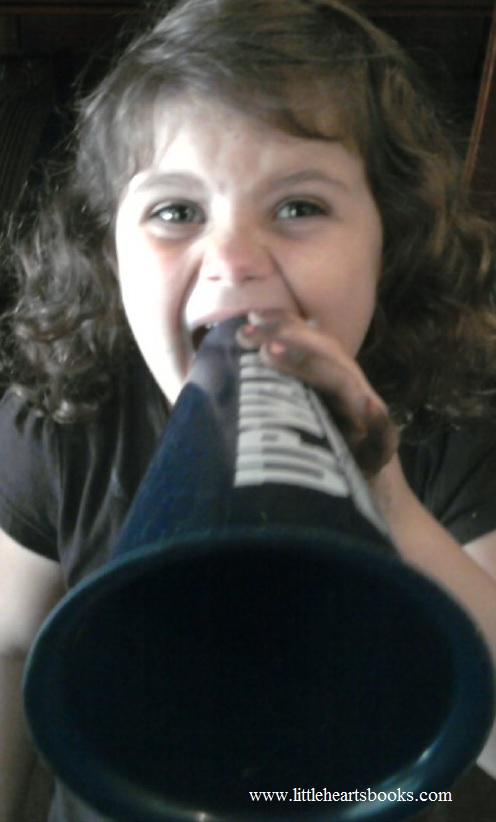 There are some children who are born into the world with the incredible life-gift of a strong will and an indomitable spirit. These children are often deeply misunderstood, and there are rows of books lining bookstore shelves with instructions about how to break their will, how to subdue their spirit, how to force their obedience. What an incredible loss of leadership, passion, and insight this world suffers when parents follow these punitive parenting practices. Not only can we parent these gifted children with gentleness and respect, but the gifts we get in return are priceless!
There are some children who are born into the world with the incredible life-gift of a strong will and an indomitable spirit. These children are often deeply misunderstood, and there are rows of books lining bookstore shelves with instructions about how to break their will, how to subdue their spirit, how to force their obedience. What an incredible loss of leadership, passion, and insight this world suffers when parents follow these punitive parenting practices. Not only can we parent these gifted children with gentleness and respect, but the gifts we get in return are priceless!
Take a look at some of the common descriptions used when referring to the characteristics of a strong-willed child:
Demanding, Insistent, Stubborn, Bossy, Cocky, Difficult, Challenging, Fixated, Contrary, Rebellious, Defiant
Now look at some of the common characteristics of adults who are world leaders, CEO’s, entrepreneurs, innovators, world-class athletes, and the like:
Decisive, Determined, Persistent, Authoritative, Confident, Valiant, Gutsy, Committed, Resourceful, Nonconforming, Bold
Note that the characteristics are the same, but the characterizations are negative when applied to a child and positive when applied to an adult.
Other characteristics of strong-willed children that coincide with the characteristics of adult leaders in their fields are:
- They are typically highly creative and intelligent.
- They are usually passionate and intense in their interests and beliefs.
- They often have an insatiable need to know ‘why.’
- They typically learn by doing.
- They tend to have an intense need to test the status quo.
- They are typically highly perfection-oriented, but often that is focused on their expectations of themselves instead of others.
- They tend to need high levels of validation.
- They usually have an intense need to be heard.
- They often have a strong need for emotional safety.
- They tend to be resistant to change unless they feel like they have some control over the change.
- They are often highly sensitive.
- They are typically intensely focused on their latest project or interest.
- They tend to be conscientious and highly committed.
- They are usually intensely independent.
While there’s no doubt that it’s a challenge having a child who seems to challenge everything, there are ways to work with them rather than against them to preserve and nurture their unique gifts. Maintaining a healthy parent/child relationship is vital as you work to find a balance between setting limits with your richly spirited child while not limiting their freedom to stretch and grow and develop into the person they were created to be.
The key to preserving your trust relationship with your child is remaining calm and present and supportive, even while setting and maintaining reasonable boundaries. It is helpful to remember that the most strong-willed children tend to be the ones who identify the most strongly with their parents. So instead of viewing their seemingly constant challenges as defiance or attempts to thwart authority, work to parent from a place of understanding that your strong-willed child is actually on a discovery mission and is doing endless ‘research’ on you by testing and retesting and digging and chiseling to discover all of your quirks and foibles and ups and downs and strengths and weaknesses. This kind of testing isn’t negative unless you make it into a battle of wills instead of responding with gentle, respectful guidance. Taking this stance will help you to keep from seeing the challenges as personal insults and, instead, see the challenges as attempts to learn and grow and understand.
There is no doubt, though, that parenting a child with the gift of a strong will is a constant exercise in patience and self-regulation. The personal growth you will experience is invaluable as you seek to parent with empathy and wisdom and compassion, but it can be draining and will often stretch you far, far out of your comfort zone. Knowing that and being prepared for it will help you cope with the inevitable stresses, and being ready ahead of time with some specific strategies for handling the challenges will help you to respond calmly and effectively.
This is a good place to revisit the Three C’s of gentle discipline—Connection, Communication, and Cooperation.
Connection ~ Maintaining a secure connection with your spirited child is vital. It is the springboard from which all of your interactions with your child will originate, and it is the touchstone to which you will both return, again and again and again, when your relationship gets strained and stained and stretched.
- Play word games, board games, rough-and-tumble outdoor games, silly face in the mirror games. Play is the language of childhood, so make sure to speak your child’s language every day.
- Laugh together. Humor is an undervalued parenting tool. But it lowers defenses, inspires smiles, brings people together, and reconnects hearts.
- Read storybooks, chapter books, travel brochures, encyclopedias, anything that will inspire you to dream together, talk, plan, get excited, share interests.
- Focus more on who your child is than on what your child does. Remember, you’re growing a person, not fixing a problem. So make sure to spend time getting to know the person, not just the child. It doesn’t have to cost anything. Just walk together, talk together, share ice cream cones, spot shapes in the clouds, and enjoy each other.
Communication ~ Children have their own ‘inner world’ of thoughts and plans and problems and worries and hopes and dreams that are occupying their time and attention, so a lack of cooperation is often simply the result of having a different agenda than we do. Getting some insight into that ‘inner world’ is key in guiding and growing them respectfully.
- Listen with your heart. Listen ‘between the lines’ to what your child is communicating through their behavior. Listen and listen and listen some more. That is always, always the first step in communicating with your child.
- Reflect, connect, and redirect. Reflect what you hear, whether it’s communicated by your child’s behavior or their words. This not only validates their emotions and lets them know that you hear and understand them, but it also helps them to understand their own emotions. For instance, if your child is upset that he can’t have a cookie after brushing his teeth for bedtime, try saying, “I hear you. You’re upset because you want a cookie.” Then reestablish your connection, “I like cookies, too!” and offer a solution, “How about we go pick out the two best cookies and put them in a special container that we can take to the park in the morning?”
- Don’t take non-compliance as a personal insult. A strong-willed child is very much their own person with their own agenda. Focus on inviting cooperation instead of demanding obedience. Whether it’s staying in bed or cleaning up or whatever the issue, make it a team effort and come up with a game plan ahead of time. For example, you could say, “You seem to be having trouble staying in bed at night. What do you think would help you to be more ready to go to sleep when it’s time for bed?” or “It’s important to pick up our things so they don’t get broken, let’s put on the timer and work together for ten minutes and see who gets the most picked up.”
- Make a firm commitment not to resort to punishments to control behavior. The resentment that comes from being punished absolves children in their own minds of responsibility. It doesn’t teach them responsibility, and resentment can actually cause a lot of the behaviors you are trying to avoid.
- Communicate daily, outwardly to your child and inwardly to yourself, the positive aspects of your child’s personality. When the focus is on ‘fixing’ a child, they get the message that they are somehow broken, and that is not a healthy self-image to take into adulthood.
- ‘No’ is not a complete thought. It is an imperative, a command. It doesn’t teach. It tells. If you want your child to learn to think like an adult, take the time to explain your adult thinking.
- Remember that children, especially when they are upset, open ‘conversations’ through their behavior, and it’s up to us, the only adults in the relationship, to gently guide them toward continuing those conversations verbally as well as equipping them with the resources to be able to do so.
- Also keep in mind that the social mores of rudeness simply aren’t inborn and don’t apply to early interactions with our children. They are learned by imitating how we as parents behave. Politeness is a heart issue that cannot be imposed by the will of another unless we want it to only be an external façade instead of a heartfelt courtesy. Helping your strong-willed child learn to speak kindly means speaking kindly to your child as well as offering guidance when they’ve been rude such as saying, “That is not a nice tone of voice” or “That isn’t a kind thing to say” and then offering a do-over “Can you try saying that to me again more nicely? I’ll always try my best to be nice to you, and I would like you to try to do the same for me.” (see Appendix B in The Gentle Parent: Positive, Practical, Effective Discipline for more ideas)
Cooperation ~ Always keep at the forefront of your parenting goals that you are seeking thoughtful cooperation, not mindless compliance. That way you will remember to treat your child as a thoughtful individual with ideas and needs and feelings of their own instead of a mindless drone there to do your bidding.
- Set clear limits and explain them in age-appropriate terms. Remember, if you want to invite cooperation, you have to actually issue the invitation to cooperate!
- Limit the number of limits. Spirited children are often stressed children simply because of their own intense emotions and reactions to things, so set them up for success by keeping your limits few and clear and by maintaining them consistently.
- Make sure to let your child have a voice in determining the limits so they feel like they have some control over their lives and so they feel some ownership over the limits.
- Brainstorm together ways of helping everyone to work together. Some ideas are to come up with hand signals or words that remain your little secret codes to indicate when it’s time to leave the park or to do homework or to dial the activity level or noise volume down a few notches.
- Invite cooperation by creating daily routines together. Don’t be surprised if your child ends up being the one who is a stickler for following the routine, even to the point of nagging you to follow it. These gifted children tend to be all-in, fully focused and committed, and they’ll expect you to be the same!
- Cooperate with your child’s needs and personality by working with them rather than against them. For instance, if you know that your child has a hard time leaving a project, give them plenty of time to find a good stopping point when you need them to leave it for a while. Or if you know that your child has a hard time following directions at bedtime, try writing or drawing the tasks that need to be done (i.e. toothbrushing, pajamas, etc.) on ping-pong balls and put them in a small ‘bedtime jar’ so your child can feel some control over their routine as they independently pick out the balls one by one for a ‘surprise’ nighttime order of tasks or take them all out and decide what order to do them in themselves.
- If you are already locked in a head-to-head power struggle, put away your boxing gloves so your child will (eventually!) feel safe putting away theirs. When you battle with your child, you may win a skirmish or two, but you will lose the treasure…your trust relationship. Putting away the gloves means slowing down, breathing through your own emotions, and finding a way to work through the issue together. Remember, you’re the adult in the relationship, but that doesn’t give you the right to overpower your child; it gives you the responsibility to empower your child. That involves modeling the tools of diplomacy—communication, cooperation, compromise—that you want your child to stock in their own emotional toolkit.
Remember, the children who come into the world with their ‘boxing gloves on’ so to speak are often the ones who become the biggest world changers. It’s not easy raising these little world-changers, I know (Believe me, I know. Two of my six are world-changers-in-the-making!), but the rewards are phenomenal!
Related posts:
Healing Your Hurts So You Don’t Hurt Your Children
Backtalk is Communication…LISTEN
When Children Act Out ~ Reflecting Our Emotions
Bridge Over Troubled Waters~Parenting a ‘Problem’ Child
The Incredible Power of the Whisper
The Taming of the Tantrum: A Toddler’s Perspective
The Thoughtful Parent’s Guide to Positive Parenting Guides
 Award-winnning author, L.R.Knost, is the founder and director of the children's rights advocacy and family consulting group, Little Hearts/Gentle Parenting Resources, and Editor-in-Chief of Holistic Parenting Magazine. Books by L.R.Knost include Whispers Through Time: Communication Through the Ages and Stages of Childhood ; Two Thousand Kisses a Day: Gentle Parenting Through the Ages and Stages ; The Gentle Parent: Positive, Practical, Effective Discipline ; and Jesus, the Gentle Parent: Gentle Christian Parenting the first four books in the Little Hearts Handbook gentle parenting series, and children’s picture books Petey’s Listening Ears and the soon-to-be-released Grumpykins series.
Award-winnning author, L.R.Knost, is the founder and director of the children's rights advocacy and family consulting group, Little Hearts/Gentle Parenting Resources, and Editor-in-Chief of Holistic Parenting Magazine. Books by L.R.Knost include Whispers Through Time: Communication Through the Ages and Stages of Childhood ; Two Thousand Kisses a Day: Gentle Parenting Through the Ages and Stages ; The Gentle Parent: Positive, Practical, Effective Discipline ; and Jesus, the Gentle Parent: Gentle Christian Parenting the first four books in the Little Hearts Handbook gentle parenting series, and children’s picture books Petey’s Listening Ears and the soon-to-be-released Grumpykins series.
Helping Unique Learners Find Their Genius ♥

[From Raising Bookworms: Life, Learning, and Literacy by L.R.Knost available 2014; Two Thousand Kisses a Day: Gentle Parenting Through the Ages and Stages, Whispers Through Time: Communication Through the Ages and Stages of Childhood, and The Gentle Parent: Positive, Practical, Effective Discipline now available on Amazon]
~~~~~~~~~~~~~~~~~~~~~
 Homeschooling a unique learner can be challenging simply because they don’t get the benefit of access to testing and professional support without a lot of initiative, research, phone calls, and door-knocking on your part. But the trade-off is the freedom to tailor your teaching and learning environment to your child’s needs, and that is of incredible value when educating a unique learner.
Homeschooling a unique learner can be challenging simply because they don’t get the benefit of access to testing and professional support without a lot of initiative, research, phone calls, and door-knocking on your part. But the trade-off is the freedom to tailor your teaching and learning environment to your child’s needs, and that is of incredible value when educating a unique learner.
Albert Einstein said, “Everybody is a genius. But if you judge a fish on its ability to climb a tree, it will live its whole life believing that it is stupid.” Unique learners have beautiful minds just waiting to find their genius. We just need to look outside of the box to help them find it!
Here are some of the tips, tools, and techniques I’ve learned through years of homeschooling my unique learners to help them work through the challenges they face on a daily basis:
1.) Lighten up…Everything in life is easier if you take it with a grain of salt and learn to laugh. Our unique learners will have more struggles and challenges than the average person throughout life, not just during their school years. That is an unavoidable fact. But who wants to be ‘average’ anyway? Help them to celebrate their uniqueness and embrace the future with grace and humor by sharing your own struggles, modeling coping techniques, and being able to laugh at your own mistakes. Make ‘even missteps are valuable steps on the road to success’ your homeschool motto!
2.) Play…Children learn best through play, and that applies to therapy, as well. Experience is the only true path to learning, so let their imaginations soar as they do the hard work of learning to cope with their unique challenges. (See some play-based, brain-enriching, and eye-tracking activities below)
3.) Jazz it up…Music truly is medicine for the soul. Buy a good set of headphones (not earbuds) and play classic instrumentals softly while your unique learner is trying to concentrate, whether it be on reading or writing or drawing, etc. Filtering out the cacophony of life and soothing their stress levels with the gentle strains of Mozart are only some of the benefits of music. Another benefit is that the rhythms, cadence, and timing of music actually have an organizing effect on the brain!
4.) Exercise…Invest in an exercise bicycle (We got ours for $15 from a yard sale!) that lets your unique learner sit in a comfortable seat while pedaling. The cross-over action of pedaling also has an organizing effect on the brain, and, if used while reading or playing video games (Video games can be great exercises for eye-tracking if you choose the right ones!) can actually increase the speed and effectiveness of learning.
unique learner sit in a comfortable seat while pedaling. The cross-over action of pedaling also has an organizing effect on the brain, and, if used while reading or playing video games (Video games can be great exercises for eye-tracking if you choose the right ones!) can actually increase the speed and effectiveness of learning.
5.) Get crunchy…Believe it or not, another ‘brain organizing’ activity is chewing, particularly crunchy foods, while reading, etc. Some good choices are pretzels, carrot sticks, celery, granola, and nuts. (If you’ve got a sensory sweetie like I do, be careful to let them choose something that won’t send their senses into overdrive.) Sugarless chewing gum can be substituted when you go places where foods aren’t appropriate, but still would like to offer your child a calming, organizing aid.
6.) Listen, listen, listen…Your unique learner will have more than their share of stress and possibly a harder time articulating it than others might. Slow down and really focus on what they are communicating. Listen ‘between the lines’ to their heart, their hurts, their fears, their needs. Be their safe place, their source of comfort and renewal.
7.) Hug it out…Physical closeness is healing, and so make sure that along with the extra struggles and challenges your unique learner faces, they get lots of extra cuddles, snuggles, and hugs. When they get older, a gentle touch on their shoulder or a light hand on their arm will be instantly calming and comforting because it will tap into those feelings of comfort and closeness from earlier childhood.
8.) Watch and learn…Just as every child is different, every child with challenges is unique in how they manifest those challenges and how they handle them. Paying careful attention to your own unique learner’s personality, struggles, aversions, triggers, etc. will give you clues as to how to help them learn to cope. With SPD (Sensory Processing Disorder), for example, avoiding unpleasant stimulus and providing needed stimulus is the name of the game. Typically, you’ll want to provide a quiet learning area at home, lots of freedom to move, permission to step away and de-stress when they feel overwhelmed, etc. and, when going out, avoid buffet-style restaurants and loud, crowded shopping and entertainment venues.
9.) Guide them gently…Discipline (guiding, modeling, teaching, etc.) invites communication and strengthens your parent/child connection. Punishment stifles communication and strains parent/child connections. Keep those vital lines of communication open and your parent/child connection healthy by providing consistent boundaries and gentle guidance, being open to discussion, and modeling the desired behavior.
10.) Read, read, read…Successful readers are not simply those who understand the mechanics of reading any more than successful biking is understanding the mechanics of a bicycle. Readers are born when a love for reading is fostered. Let them see you reading often. Cuddle up and read to them when they are young. Co-read (you read a sentence, they read a sentence, etc) when they are new readers or when they are tired or struggling. Let them read comics (The relation of pictures to words is a huge aid in reading comprehension.). For more reading tips, see Raising Bookworms.
Here are some exercises and activities that have helped my Renaissance Girl with her challenges with SPD, dyslexia, ADD, visual/auditory processing disorders, dyscalculia, etc:
Gross motor and fine motor cross-over exercises to get the two sides of the brain communicating more efficiently…
~Bouncing a brightly colored ball back and forth between us using alternate hands (left, right, left, right, etc.)
~Skipping, marching, swinging while singing 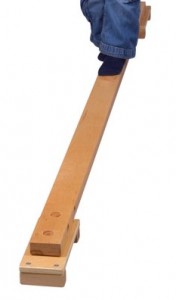
~Climbing
~Balance beam
~Bicycling
~Piano
~Sorting 
Brain-organizing activities…
~Memory matching
~Tonal music
~Free-style building with blocks, Tinker Toys, Legos, etc.
~Design-matching building
~Sensory bins
Eye-tracking activities…
~Laser pointer games-following a laser pointer light in a darkened room, pointing to moving targets (i.e. bubbles), etc.
~Ceiling tracing-following the seam of the wall and ceiling from corner to corner moving only the eyes
~Video games-Flash Focus and Brain Age are good choices for the Gameboy. Wii Fit, Carnival Games, and Sports Games are good for the Wii. There are also great games for improving eye-tracking for the X-box, Playstation, and online. If you do the research to find what best fits your child’s interests, you’ll have much better participation!
Visual-motor learning…
~Clay letters-tactile learning by forming letters and words on a template with clay or dough 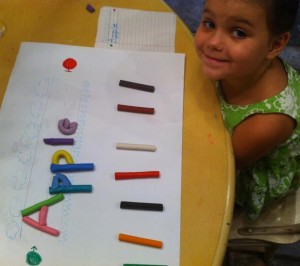
~Contextual learning-Children with dyslexia tend to learn better in context than by breaking things down to their parts, so phonics-based learning is often mind-boggling for them. Flashcards are a no-go because speed and movement impede their attempts to focus rather than help them. Writing-based learning such as copying and illustrating short poems, copying a short sentence from a wall-mounted chalkboard or large paper taped to the wall and illustrating it, writing and illustrating their own stories, and writing stories on the computer are great ways to help them learn to read.
~Once they are beginning to read, graphic novels, large-print chapter books on topics that interest them, and continued creative writing are excellent practice.
~Online reading games can be helpful, but only if they are untimed (Timed anything is a huge stressor and sets them up for frustration and failure.) and your child feels comfortable with the level of activity and brightness on the screen as otherwise these can cause headaches and their eyes to tire quickly.
These tips are not, of course, exhaustive or a replacement for professional therapies. But as you work your way through what can often be a labyrinth of paperwork, meetings, appointments, etc. on your way to finding the services your child needs, these may help to ease the wait a bit. 🙂
Related posts:
Children who love to read…READ! Engaging children’s hearts in the wonder of reading instead of just training their minds in its mechanics. Raising Bookworms
It’s time for a return to childhood, to simplicity, to running and climbing and laughing in the sunshine, to experiencing happiness instead of being trained for a lifetime of pursuing happiness…it’s time to let children be children again. A Return to Childhood
Think homeschooled children are unsocialized, over-controlled, locked-away-from-the-world misfits? Think again! My Renaissance Girl
Successful reading means far more than possessing the ability to read. Engaging the hearts of students moves reading success beyond a life skill and turns it into a life style. And graphic novels are too powerful of a tool in our arsenal to be disregarded because of pride or prejudice. Raising Super Readers~The MARVELous Power of Comic Books!
In the world of a child wonders are as simple as sticks and sheets, leaves and books, boxes and giggles, and the promise in a rainy day. The Seven Wonders of the World of Childhood
Parenting choices strongly impact the level and type of attachment a child develops and, by extension, the development of a love of learning. A love of learning grows when it isn’t stifled by fear or stress or regimented by over-structuring or a focus on achievement or competition. Parents fostering a healthy attachment are thus also fostering a life-long love of learning in their children. Live to Play~Play to Learn~Learn to Live!
If you give a toddler a book
He’ll climb into your lap
While he’s in your lap
He might lay his head on your chest
When he lays his head on your chest
He’ll hear your heartbeat
When he hears your heartbeat
He’ll probably ask if you can hear… If You Give A Toddler A Book…
Einstein recognized his unique lens and often commented about it and about how organized education systems didn’t accommodate individuality and creativity. Here is a look into this ‘unique learner’s’ mind in his own words…Beautiful Minds
 Award-winnning author, L.R.Knost, is the founder and director of the children's rights advocacy and family consulting group, Little Hearts/Gentle Parenting Resources, and Editor-in-Chief of Holistic Parenting Magazine. Books by L.R.Knost include Whispers Through Time: Communication Through the Ages and Stages of Childhood ; Two Thousand Kisses a Day: Gentle Parenting Through the Ages and Stages ; The Gentle Parent: Positive, Practical, Effective Discipline ; and Jesus, the Gentle Parent: Gentle Christian Parenting the first four books in the Little Hearts Handbook gentle parenting series, and children’s picture books Petey’s Listening Ears and the soon-to-be-released Grumpykins series.
Award-winnning author, L.R.Knost, is the founder and director of the children's rights advocacy and family consulting group, Little Hearts/Gentle Parenting Resources, and Editor-in-Chief of Holistic Parenting Magazine. Books by L.R.Knost include Whispers Through Time: Communication Through the Ages and Stages of Childhood ; Two Thousand Kisses a Day: Gentle Parenting Through the Ages and Stages ; The Gentle Parent: Positive, Practical, Effective Discipline ; and Jesus, the Gentle Parent: Gentle Christian Parenting the first four books in the Little Hearts Handbook gentle parenting series, and children’s picture books Petey’s Listening Ears and the soon-to-be-released Grumpykins series.
Why Whining is a Win!
[Reprinted from Whispers Through Time: Communication Through the Ages and Stages of Childhood by L.R.Knost. Two Thousand Kisses a Day: Gentle Parenting Through the Ages and Stages and The Gentle Parent: Positive, Practical, Effective Discipline also available through Amazon and other major retailers.]
 It’s seven o’clock and you’re finishing up the dishes before starting bedtime baths. And then it starts…the whining. Every. Single. Night. Your four-year-old knows the routine. She knows you are going to read her favorite bedtime book. She knows you will let her choose which pajamas to wear. She knows she has to brush her teeth. But that doesn’t stop her from standing in the kitchen night after night whining about the same things.
It’s seven o’clock and you’re finishing up the dishes before starting bedtime baths. And then it starts…the whining. Every. Single. Night. Your four-year-old knows the routine. She knows you are going to read her favorite bedtime book. She knows you will let her choose which pajamas to wear. She knows she has to brush her teeth. But that doesn’t stop her from standing in the kitchen night after night whining about the same things.
So what’s the deal? Short-term memory loss? An innate desire to drive you crazy? A disorder of the vocal cords that makes using a normal voice impossible after the sun sets and every time she doesn’t get her way all day long?!?
Here’s a shocker for you: Whining is actually a sign of maturity! Yep, that unnerving, endless, nails-on-a-chalkboard, make-your-head-explode whine is a sign that your little one is growing up and, get this, gaining self-control! I can see your heads shaking, but read on, parents, caregivers, and bleeding ears of the world, read on.
Whining, believe it or not, is an advanced skill. Babies come into the world with exactly one form of verbal communication–crying. They may smack their lips and root for the breast when hungry. They may arch their back or wiggle in discomfort when they need a diaper change. But when physical expressions don’t result in needs being met or their needs are emotional rather than physical, then crying is always the ‘default’ communication. Every need, every discomfort, every bit of loneliness or anxiety or frustration or stress has to be communicated through that one single venue.
Over time as babies grow into toddlers, they begin to learn new ways to communicate, pointing, grunting, picking up a few words here and there, and they move into a more interactive stage wherein they make attempts to communicate in these new ways, but fall back very quickly into crying if they aren’t understood and responded to quickly.
As time goes on, toddlerhood gives way to the preschool years and language skills advance, becoming the main source of communication for a little one. But even so, their grasp of language is limited and their prefrontal cortexes (center of forethought/pre-thinking skills) are still developing. This leads to a rather dichotomous situation in which they know what they want to say, but often can’t quite put the words together quickly or clearly enough for us oh-so-impatient adults.
As they work to communicate, their frustration levels rise and stress hormones sap the blood flow from those underdeveloped ‘thinking’ portions of their brains and, just when they need the use of language the most, they begin to lose the ability to articulate their needs. As toddlers they would fall quickly back into crying at this point, but as preschoolers their more advanced self-control helps them to avoid immediately dissolving into tears and, instead, they fall into the ‘middle-ground’ of whining.
Whining is, in fact, just an advanced form of crying and, as such, is just as grating on the nerves as crying because it is designed to get the attention of a caregiver. The difference is actually in our attitudes toward whining. We accept crying as a normal part of baby and toddlerhood, but label the whining of a preschooler ‘bratty’ and ‘spoiled’ and refuse to listen to them until they ‘use their normal voice’ just when they need us to listen the most!
If we, as adults, would adjust our mindsets to accept the normalcy of whining, it would lose a bit of its power to annoy while enabling us to respond empathetically to our children when they’re mustering all their newly-developed coping skills to avoid a meltdown.
So, what can we do when our little ones lapse into ‘whine-eze’ and we feel like tearing our hair out? Well, as always, an ounce of prevention is worth a pound of cure:
- Pay attention to the time of day whining seems to occur most often.
- Watch for triggers such as hunger, missed naps, and over-hurried schedules.
- Make whatever adjustments you can to prevent the whining before it starts.
- If all else fails and the whining does commence, remember that your little one is struggling to communicate in that moment. Respond by slowing down, sitting with them or kneeling down in front of them, and giving them your full attention.
- Use a quiet, soothing tone to reassure them, and listen patiently all the way through as they work their way back through the frustration and find the words to express themselves.
- You may not be able to give them the toy or snack or whatever else it is they want at that moment, but giving them the chance to be heard is often enough to forestall an all-out meltdown.
More than anything, though, giving your little ones the gift of your time and attention when they need it most (and often seem to deserve it least) will help foster that all-important connection that provides the basis for gentle guidance and boundary-setting. And, as an added bonus, children who feel heard tend to outgrow the whining stage much earlier than children who feel like they have to fight to be heard.
Related posts:
The Gift of a Strong-Willed Child
Backtalk is Communication…LISTEN
When Children Act Out ~ Reflecting Our Emotions
Bridge Over Troubled Waters~Parenting a ‘Problem’ Child
The Taming of the Tantrum: A Toddler’s Perspective
Practical, Gentle, Effective Discipline
200 Ways to Bless Your Children with a Happy Childhood
When Children Hit~10 Tips for Parents
Toddlers, Tantrums, and Time-Ins, Oh My!
 Award-winnning author, L.R.Knost, is the founder and director of the children's rights advocacy and family consulting group, Little Hearts/Gentle Parenting Resources, and Editor-in-Chief of Holistic Parenting Magazine. Books by L.R.Knost include Whispers Through Time: Communication Through the Ages and Stages of Childhood ; Two Thousand Kisses a Day: Gentle Parenting Through the Ages and Stages ; The Gentle Parent: Positive, Practical, Effective Discipline ; and Jesus, the Gentle Parent: Gentle Christian Parenting the first four books in the Little Hearts Handbook gentle parenting series, and children’s picture books Petey’s Listening Ears and the soon-to-be-released Grumpykins series.
Award-winnning author, L.R.Knost, is the founder and director of the children's rights advocacy and family consulting group, Little Hearts/Gentle Parenting Resources, and Editor-in-Chief of Holistic Parenting Magazine. Books by L.R.Knost include Whispers Through Time: Communication Through the Ages and Stages of Childhood ; Two Thousand Kisses a Day: Gentle Parenting Through the Ages and Stages ; The Gentle Parent: Positive, Practical, Effective Discipline ; and Jesus, the Gentle Parent: Gentle Christian Parenting the first four books in the Little Hearts Handbook gentle parenting series, and children’s picture books Petey’s Listening Ears and the soon-to-be-released Grumpykins series.
Backtalk is Communication…LISTEN
[Reprinted from Whispers Through Time: Communication Through the Ages and Stages of Childhood by L.R.Knost. Two Thousand Kisses a Day: Gentle Parenting Through the Ages and Stages and The Gentle Parent: Positive, Practical, Effective Discipline also available through Amazon and other major retailers.]
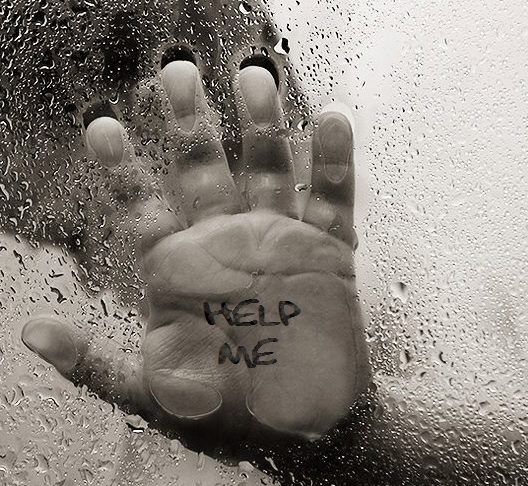 With more than 90% of parents admitting to spanking or otherwise physically punishing their children at least occasionally, mainstream American parenting can certainly be defined as punitive. If you go to the library or browse the shelves at Barnes & Noble or check out Amazon’s best sellers in the parenting genre, you will find a predominance of popular, punishment-based, obedience-focused parenting guides. Whether its spanking or time outs or removal of privileges or time confined in their room, the vast majority of children in the United States are raised with punitive parenting.
With more than 90% of parents admitting to spanking or otherwise physically punishing their children at least occasionally, mainstream American parenting can certainly be defined as punitive. If you go to the library or browse the shelves at Barnes & Noble or check out Amazon’s best sellers in the parenting genre, you will find a predominance of popular, punishment-based, obedience-focused parenting guides. Whether its spanking or time outs or removal of privileges or time confined in their room, the vast majority of children in the United States are raised with punitive parenting.
When it comes to children talking back to parents, many of these punitive parenting guides dictate a zero-tolerance policy. By their definition, backtalk is often characterized as verbal or emotional abuse of parents, defiance, rudeness, or threats:
- Verbal or emotional abuse of parents is considered any statement that insults or hurts a parent such as, “You’re so mean!” or “I wish I didn’t even have parents!” or “I hate you!”
- Defiance is any statement containing the word “No” in response to a parental command.
- Rudeness is defined as anything from deep sighs to rolled eyes to stomped feet.
- Threats are any statements that give conditions such as, “If you take away my cell phone, I’ll just go get a new one!” or “If you don’t drive me to my friend’s house, I’m walking there!”
These parenting guides direct parents to decide which punishment to mete out when their child talks back to them, specifying that the deciding factor should be whichever punishment would be the most unpleasant, painful, and distressing for the child. Punishments are to be carried out swiftly and without discussion. When the retribution for the child’s actions is over, it is to be followed with a lecture laying down the laws of the family. Again, no discussion is allowed, but if the child expresses appropriate penitence, love and hugs can then be offered.
In addition to the sick feeling in the pit of my stomach at the thought of children being subjected to this kind of harsh, punitive parenting, I’m saddened by the upside-down reasoning that shuts communication down instead of utilizing it to bring healing, understanding, and restoration to the parent/child relationship.
Take a look at the order of parenting prescribed: First, punishment meted out by the parent. Second, lecture delivered by the parent. Third, conditional reconnection based on a proper expression of remorse to the parent from the child.
In gentle parenting, the order and intent of parenting would be the polar opposite: First would come listening for the need behind the behavior and reconnecting with the child at the point of need. Second, would be initiating a two-way communication about the problem and brainstorming about how to address the issue in ways that will meet everyone’s needs. Third, would be offering guidance and equipping the child with better ways to express needs in the future.
The punitive parenting approach focuses on the child as the problem and attempts to solve the problem by ‘fixing’ the child through intentionally unpleasant external forces.
The gentle parenting approach focuses on the child having a problem and attempts to help the child solve the problem through connection, communication, and inviting cooperation.
Now look at the definitions of backtalk–verbal and emotional abuse of parents, defiance, rudeness, and threats. The questions that immediately arise are: What about the parents? Are they held to the same standards as the children? Or do they threaten? Do they say ‘No’? Do they sigh? Do they hurt their children?
As parents, our actions will always be reflected in our children’s behavior. Children learn what they live. No amount of lecturing can undo the powerful impact on a child of their parent’s own behavior and choices.
When a child backtalks, sometimes also referred to as mouthing-off or sassing, they are in the throes of a huge, internal maelstrom of emotion. Whatever they are reacting to in the moment, whether it’s being told ‘no’ about something or being asked to do or not do something, it is rarely those issues that are at the root of the problem. The moment at hand is just the tipping point causing a fissure in the child’s heart that lets out a bit of the steam inside. The real concern should be that there is, metaphorically, steam in the child’s heart to begin with.
It is at this point that parents have the opportunity to model self-control and self-regulation by controlling their own knee-jerk reaction to their child’s backtalk. Instead of meeting fire with fire, childish outburst with childish parental outburst, child’s tantrum with adult tantrum, parents can slow down, breathe through their own emotions, and then listen through the fiery storm of their child’s words to the hurt, fear, and anger behind the words.
In the same way that “a gentle answer turns away wrath,” a soft-voiced, “Let’s take a minute and calm down so we can work through this together, okay?” from a parent is a magical, healing balm that immediately begins to diffuse tough situations and creates an atmosphere in which connection and communication can bring effective, peaceful solutions not only to the issue at hand, but to the inner turmoil that prompted the outburst in the first place.
Meeting a child at their point of need when that need is expressed through meltdowns, yelling, disrespect, or defiance takes patience, self-control, and empathy on the part of a parent, which can be a huge growth experience for the parent if they, themselves, were not parented that way. But the impact of living those positive life skills in front of our children is immeasurable.
Parenting isn’t a perfect science and parents aren’t perfect people, but creating an overall atmosphere of respect in a home starts with the parents modeling respect in their own tone of voice, in their own reactions to stressful situations, in their own interactions with their children.
It’s not easy, for sure. But the best things, the most valuable things, in life rarely are. Working toward being understanding, available, and responsive to our children’s needs yields a priceless return in our relationship as the years fly by and adulthood looms. Not meeting those needs, though, may have serious negative consequences…
Dear Daughter,
You entered your teen years with a bang a few years ago, and the explosions have been shattering our home ever since. I’ve begged, threatened, bribed, and punished; cried, shouted, and bargained; but I just can’t find a way to reach you anymore. You constantly say I don’t listen to you, but how can I when you won’t talk to me? You say I don’t understand you, but how can I when you push me away? You say we aren’t a family, but then spend every day with earphones in your ears, blocking us out. You ask me why I hate you, then roll your eyes when I tell you I love you. How did it come to this? We used to be such a happy family. Please, let me be there for you during this huge transition in your life. Let’s really try to communicate with each other. I’m just lost here, honey, and I need you to reach out and help me reconnect with you. I love you.
Your Dad
‘Dear’ Dad,
Happy family? Are you kidding me? No, I guess not. You never did get it. Okay, you asked, so I’ll tell you. You were always happy because you were always in control. Want to know why I don’t talk to you now? Because you never listened when I was little. When I was scared in my room at night and called you, you either ignored me or threatened to spank me if I didn’t go to sleep. I’d lay there, crying so hard I’d almost throw up, terrified of the sounds and shadows in my room, but even more terrified of you. So, sorry, but I don’t buy that you’re ‘there for me’ when it’s only ever been at your own convenience. When you were mad at something I’d done and I tried to explain myself, you’d call it backtalk and smack me in the mouth. So forgive me if I don’t really believe you when you say you want to ‘communicate’ with me now. When I’d try to show you a dance I’d made up or tell you about how someone had pushed me on the playground, you couldn’t even be bothered to look away from your stupid computer while I was talking, so if I’m wrapped up in my electronics, I learned that little trick from you, Father Dear. Oh, and reconnect? Really? That implies that we were once connected. But when I was a little girl and invited you into my world and asked you to play with me, you were always too busy. So if you don’t understand me, sorry, but that invitation expired years ago. Want to know why I think you hate me? Because your actions told me so. Your ‘love’ is just words.
‘Your’ Daughter
Not all children react this way to harsh, punitive, control-based parenting, of course. Some children, due to personality, other influences and mentors in their lives, or simply as a survival instinct, will turn out okay despite how they are parented.
But ‘okay’ is too mediocre a goal when it comes to growing our children into the adults who will one day lead our world. Instead of raising children who turn out okay despite their childhood, let’s raise children who turn out extraordinary because of their childhood. Let’s grow excellent, outstanding, remarkable adults who will be world changers for the next generation and the generations to come.
Related posts:
When Children Act Out ~ Reflecting Our Emotions
Changing the World, One Little Heart at a Time
Practical, Gentle, Effective Discipline
 Award-winnning author, L.R.Knost, is the founder and director of the children's rights advocacy and family consulting group, Little Hearts/Gentle Parenting Resources, and Editor-in-Chief of Holistic Parenting Magazine. Books by L.R.Knost include Whispers Through Time: Communication Through the Ages and Stages of Childhood ; Two Thousand Kisses a Day: Gentle Parenting Through the Ages and Stages ; The Gentle Parent: Positive, Practical, Effective Discipline ; and Jesus, the Gentle Parent: Gentle Christian Parenting the first four books in the Little Hearts Handbook gentle parenting series, and children’s picture books Petey’s Listening Ears and the soon-to-be-released Grumpykins series.
Award-winnning author, L.R.Knost, is the founder and director of the children's rights advocacy and family consulting group, Little Hearts/Gentle Parenting Resources, and Editor-in-Chief of Holistic Parenting Magazine. Books by L.R.Knost include Whispers Through Time: Communication Through the Ages and Stages of Childhood ; Two Thousand Kisses a Day: Gentle Parenting Through the Ages and Stages ; The Gentle Parent: Positive, Practical, Effective Discipline ; and Jesus, the Gentle Parent: Gentle Christian Parenting the first four books in the Little Hearts Handbook gentle parenting series, and children’s picture books Petey’s Listening Ears and the soon-to-be-released Grumpykins series.
The Incredible Power of the Whisper

[Reprinted from Whispers Through Time: Communication Through the Ages and Stages of Childhood by L.R.Knost. Two Thousand Kisses a Day: Gentle Parenting Through the Ages and Stages and The Gentle Parent: Positive, Practical, Effective Discipline also available on Amazon and through other major retailers.]
If a picture is worth a thousand words, then a whisper is worth two thousand when it comes to parenting. In the same way that the instinctive human reaction to someone raising their voice is to raise our voice one octave higher, to out-shout the shouter, to over-power the person powering-up on us, the instinctive human response to someone whispering is to quiet down, to lean-in, to listen.
As parents, it’s up to us to exercise the wisdom and maturity to control our own instinctive reaction to our children’s piercing screams, ear-shattering shrieks, and mind-blowing, foot-stomping, out-of-control fits. Small people have big emotions and need help processing them. Their cries as babies and shrieks and tantrums as toddlers and meltdowns as preschoolers are, literally, cries for help.
Ignoring or punishing them, or reacting with anger ourselves, simply forces them to bury their unresolved emotions and causes us to miss an opportunity to not only share our wisdom by helping them process their big feelings, but also to guide our children toward more appropriate ways to communicate as they grow. In some cases, when a child’s emotions are forced underground it results in a child who simmers with hidden rage just waiting to explode again or, worse, the rage may turn inward and result in a child who is withdrawn, detached, or even depressed.
Having parenting tools ready and waiting for the inevitable challenges of raising little humans is wise. When emotions begin running high, and as parents we can feel our own stress levels rising, knowing we have a well-stocked parenting toolbox with tried and tested tools helps us to keep our cool so that we can parent more intentionally and effectively.
In the first weeks of life, a baby has one ‘default’ mode of verbal communication…crying. They may give physical cues to their needs such as chewing on their hands to indicate hunger or the beginning of teething, but their verbal communication takes the sole form of crying.
From those first tiny squeaks and mewls of a newborn, a baby’s cries mature into whimpers, squeals, screams, and sobs, all communicating one thing: “I need help.” When we respond to our baby’s cries quickly and gently, whether it’s to feed them or change them or give them a cuddle, we communicate in return, “I’m here. You can count on me.”
But then there are those times when we’ve fed them, changed them, burped them, rocked and cuddled and walked with them, and their piercing screams still shatter the silence…and our hearts. Those are times when parents often begin to feel overwhelmed, stressed, sometimes even resentful and angry because no matter what they try, they can’t ‘fix’ their baby and make them stop crying. It is in those moments of frustration and distress that we need to breathe in deeply to calm ourselves, then stop stressing over trying to ‘fix’ our baby and instead whisper in our little one’s ear, “I’m here. I’ve got you. We’ll get through this together.” They may not understand our words, but they will hear our heart.
The truth is that a baby’s cries can’t always be ‘fixed’ and sometimes the need they’re communicating is the need to express their emotions, but they always, always need the comfort and assurance that they will be heard and that their needs will be met and that they can trust us to be there for them, no matter what.
Once a baby reaches the crawling, exploring, discovering stage, they often have a great time experimenting with the volume, pitch, and range of their voice, much to the chagrin of their parents and pretty much everyone else within earshot. The ear-shattering squeals and bellows and joyful shrieks at this stage can be disconcerting to us parents, to say the least, especially when our little falsetto performs their operatic interpretation in public places such as doctor’s offices, libraries, and restaurants.
This is a prime opportunity to exercise the power of the whisper. When the first shriek splits the silence, we can hold our finger to our lips, smile like we’re inviting them to join in on a secret, and whisper, “It’s whisper time. Let’s use our little voices together.” Making a game out of it invites cooperation rather than demands obedience, a much more effective parenting technique, and practicing little voices together demonstrates what we want our little one to do instead of simply telling them what we don’t want them to do.
Don’t be surprised if it takes many repetitions over several outings before your little one begins to get the idea, though. As with all parenting, time and patience and an awareness (and acceptance!) of what is normal for each developmental stage is key.
Toddlers and preschoolers are famous for their big tantrums sparked by big emotions and big frustrations. Obviously being aware of and avoiding tantrum triggers such as hunger, tiredness, and over-stimulation is important. But even with the most proactive parenting, there may still be times when our little ones have unexpected, incomprehensible, inconsolable tantrums.
When faced with a toddler or preschooler in the throes of a tantrum, if we know what caused the tantrum, we can validate the emotion with a soft-voiced, “You’re angry (disappointed, sad, hurt) because you (fill in the blank).” Often just hearing their feelings put into words is enough to calm a toddler who is frustrated at their inability to express themselves, but sometimes they need a bit of time and support to work through their big emotions.
If the tantrum continues we need to stay calm and present and remember that we are modeling self-control and self-regulation when we practice those skills instead of having an adult-style tantrum in response to our child’s tantrum. Instead of trying to control our child’s outburst with demands or threats or bribes, we can simply stay close and whisper, “I hear you. I’m here.”
The secret of the whisper in taming a tantrum can be seen in the difference between dumping a bucket of water on a fire, which can force the fire underground where it may smolder and reignite unexpectedly, versus spraying a gentle mist on the fire so it’s slowly and fully extinguished, leaving the ground saturated so the fire won’t reignite. Settling your little one quietly and patiently with a whisper is the gentle mist that saturates them with your unconditional love and support so they don’t simmer with hidden rage that may erupt spontaneously again.
Remember, no matter the problem, kindness is always the right response. When your child is having a problem, stop, listen, then respond to the need, not the behavior. The behavior can be addressed later, after the need has been met, because only then is the door to effective communication truly open.
The thing to keep in mind is that there is no cure for childhood. There is no parenting secret that will ‘work’ to keep children from being children. Children will cry. They will tantrum. They will yell and giggle and climb and run and throw things and build things and hit and hug and explore and make glorious mistakes and incredible discoveries. They will be human. They will be children. And that’s more than okay. That’s beautiful, messy, wonderful childhood, just as it should be.
Parents are guides through the incredible journey of childhood, not to keep their children from experiencing childhood, but to keep them safe as they learn the magnificent life lessons that childhood has to offer.
Related posts:
The Taming of the Tantrum: A Toddler’s Perspective
Practical, Gentle, Effective Discipline
10 Ways to Play with your Children when Play is the Last Thing on your Mind
200 Ways to Bless Your Children with a Happy Childhood
Playground Confessions~Look Who’s Talking!
When Children Hit~10 Tips for Parents
Testing the Boundaries~What’s a Parent to Do?
Toddlers, Tantrums, and Time-Ins, Oh My!
Easy Peasy DIY Parenting Tools
 Award-winnning author, L.R.Knost, is the founder and director of the children's rights advocacy and family consulting group, Little Hearts/Gentle Parenting Resources, and Editor-in-Chief of Holistic Parenting Magazine. Books by L.R.Knost include Whispers Through Time: Communication Through the Ages and Stages of Childhood ; Two Thousand Kisses a Day: Gentle Parenting Through the Ages and Stages ; The Gentle Parent: Positive, Practical, Effective Discipline ; and Jesus, the Gentle Parent: Gentle Christian Parenting the first four books in the Little Hearts Handbook gentle parenting series, and children’s picture books Petey’s Listening Ears and the soon-to-be-released Grumpykins series.
Award-winnning author, L.R.Knost, is the founder and director of the children's rights advocacy and family consulting group, Little Hearts/Gentle Parenting Resources, and Editor-in-Chief of Holistic Parenting Magazine. Books by L.R.Knost include Whispers Through Time: Communication Through the Ages and Stages of Childhood ; Two Thousand Kisses a Day: Gentle Parenting Through the Ages and Stages ; The Gentle Parent: Positive, Practical, Effective Discipline ; and Jesus, the Gentle Parent: Gentle Christian Parenting the first four books in the Little Hearts Handbook gentle parenting series, and children’s picture books Petey’s Listening Ears and the soon-to-be-released Grumpykins series.
Whispers Through Time ~ Book Reviews, Author Interviews & Book Trailer
My first book trailer! This was sooooo fun. My children had a blast making it! My toddler decided she was going to join me during my segment, lol, so you’ll see me chatting with her a few times. Nothing wrong with a glimpse of real life, though, right? So, without further ado, here is the official book trailer for Whispers Through Time: Communication Through the Ages and Stages of Childhood. Enjoy!
I’m so honored to have these incredible voices for children reviewing Whispers Through Time: Communication Through the Ages and Stages of Childhood:
Sweet, Funny, Insightful: Whispers Through Time by L.R. Knost is destined to be a dog-eared favorite, passed down from generation to generation. As long as there are children being born into this world and toddlers having tantrums and teens racing toward adulthood at an alarming pace, there will be parents who will turn to this book for guidance. Why? Not because L.R. Knost has all the answers, but because she shows parents how to find their own answers for their own children and their own families. This guidebook challenges conventional thinking with a wisdom born of experience and a healthy dose of research to back it up. Written with the same unique blend of sweetness and humor, grit and honesty, reassurance and insight that made her first book, Two Thousand Kisses a Day, a best-seller, Whispers Through Time is sure to become a runaway hit in its own right. An absolute must-have for any home library. Highly recommended!
Dr. Laura Markham of AhaParenting Audio interview with the author
The Natural Parent Magazine Book trailer and summary
Kidlutions: Solutions for Kids Book review and contest
Parenting Beyond Punishment Book review and giveaway
The Path Less Taken Book review
Mommy Perks Book trailer and review
The Hippie Housewife Book review and giveaway
Diary of a Natural Mom Book review and giveaway
The Mahogany Way Book review and giveaway
Parenting with Understanding Book review and giveaway
Dr. Lynne Kenney: The Family Coach Book Trailer and review
Nurture Parenting Magazine Book trailer and giveaway
Table of Contents:
Chapter 1 ‘Communication: Whispers Through Time’ explores the importance of communication and connection in parent/child relationships.
Chapter 2 ‘Baby Talk’ celebrates those first moments and days and weeks of communication between newborns and parents.
Chapter 3 ‘Becoming Mommy’ shares the beauty of embracing parenthood.
Chapter 4 ‘Baby Signing: A Gentle Introduction to Communication’ introduces the concept of using baby signs to communicate.
Chapter 5 ‘The Power of Perception’ explores the connection between a parent’s perception of their child’s motives and the parent’s response.
Chapter 6 ‘Eleven Tips to Beat the Mama Blues’ shares eleven ways to work through those sometimes hard, sometimes humdrum days of parenthood.
Chapter 7 ‘The Taming of the Tantrum: A Toddler’s Perspective’ explores life from the perspective of a toddler and offers guidance on how to use communication to reduce or eliminate tantrums.
Chapter 8 ‘The NO Zone’ shares ideas for how to respond when a toddler discovers how to use the word, “NO!”
Chapter 9 ‘The Secret of the Whisper’ offers a unique response to little people’s sometimes big emotions.
Chapter 10 ‘Ten Ways to Play When Play is the Last Thing on your Mind’ shares ten ideas for weaving play into an ordinary day
Chapter 11 ‘A Listening Heart’ breaks down the concept of listening and offers ideas for how to pinpoint the issue if listening is a problem.
Chapter 12 ‘A Child’s Heart’ shares a glimpse of the power of communication and connection.
Chapter 13 ‘Why Whining is a Win’ offers a unique perspective on that age-old annoying behavior…whining.
Chapter 14 ‘Can We Talk?’ explores adults’ use of figurative language and the confusion that can result for children.
Chapter 15 ‘Age of Reason: Why, oh Why, Do They Always Ask Why?’ examines why the why stage is so important.
Chapter 16 ‘Five Gentle Tools for Handling Lying’ shares a practical and gentle approach to lying.
Chapter 17 ‘Rethinking Tattling’ explores the importance of listening to tattling.
Chapter 18 ‘The Artist in the Child’ celebrates the differences in children through the unique perspective of the artist.
Chapter 19 ‘Whisper Words of Wisdom’ examines the unseen wounds that thoughtless words can inflict.
Chapter 20 ‘Love Means Sometimes Having to Say You’re Sorry’ shares the importance of making things right when you’ve done something wrong.
Chapter 21 ‘The sWord and the sTone’ covers the importance of living what you want your child to learn.
Chapter 22 ‘Chatterboxes and Dreamers: Is Your Child an Introvert or an Extrovert?’ discusses the different parenting approaches to different personalities.
Chapter 23 ‘I is for `I dunno’ and That’s Good Enough for Me’ shares some insights into the mysteries of the adolescent mind.
Chapter 24 ‘Backtalk is Communication: LISTEN!’ tackles the startling truth that when children talk back they are actually communicating.
Chapter 25 ‘My Huckleberry Friend’ shares the reasons that a parent should not only be their child’s friend, they should be their best friend.
Chapter 26 ‘Whispering Winds of Change’ explores the process of letting them go while still holding them close.
Chapter 27 ‘Messages in a Bottle: Our Hope for the Future’ shares thirty-two messages to write on the hearts and minds of your children before sending them out into the world.
Appendix A ‘Tips for Talking to Teens’
Appendix B ’12 Steps to Gentle Parenting’
Sample chapters:
Backtalk is Communication…LISTEN
The Taming of the Tantrum: A Toddler’s Perspective
10 Ways to Play when Play is the Last Thing on Your Mind
If you’d like to know more about Two Thousand Kisses a Day: Gentle Parenting Through the Ages and Stages or Whispers Through Time: Communication Through the Ages and Stages of Childhood, click the links to read more editorial and reader reviews.
Note: For those outside the US who would like to purchase books by L.R.Knost without Amazon’s high international shipping costs, a limited supply is available directly from the author here.
 Award-winnning author, L.R.Knost, is the founder and director of the children's rights advocacy and family consulting group, Little Hearts/Gentle Parenting Resources, and Editor-in-Chief of Holistic Parenting Magazine. Books by L.R.Knost include Whispers Through Time: Communication Through the Ages and Stages of Childhood ; Two Thousand Kisses a Day: Gentle Parenting Through the Ages and Stages ; The Gentle Parent: Positive, Practical, Effective Discipline ; and Jesus, the Gentle Parent: Gentle Christian Parenting the first four books in the Little Hearts Handbook gentle parenting series, and children’s picture books Petey’s Listening Ears and the soon-to-be-released Grumpykins series.
Award-winnning author, L.R.Knost, is the founder and director of the children's rights advocacy and family consulting group, Little Hearts/Gentle Parenting Resources, and Editor-in-Chief of Holistic Parenting Magazine. Books by L.R.Knost include Whispers Through Time: Communication Through the Ages and Stages of Childhood ; Two Thousand Kisses a Day: Gentle Parenting Through the Ages and Stages ; The Gentle Parent: Positive, Practical, Effective Discipline ; and Jesus, the Gentle Parent: Gentle Christian Parenting the first four books in the Little Hearts Handbook gentle parenting series, and children’s picture books Petey’s Listening Ears and the soon-to-be-released Grumpykins series.
Stepping in When Parents are Out-of-Control
[By L.R.Knost, author of The Gentle Parent: Positive, Practical, Effective Discipline, Whispers Through Time: Communication Through the Ages and Stages of Childhood and Two Thousand Kisses a Day: Gentle Parenting Through the Ages and Stages now available on Amazon and through other major retailers.]
~~~~~~~~~~~~~~~~~~~~~
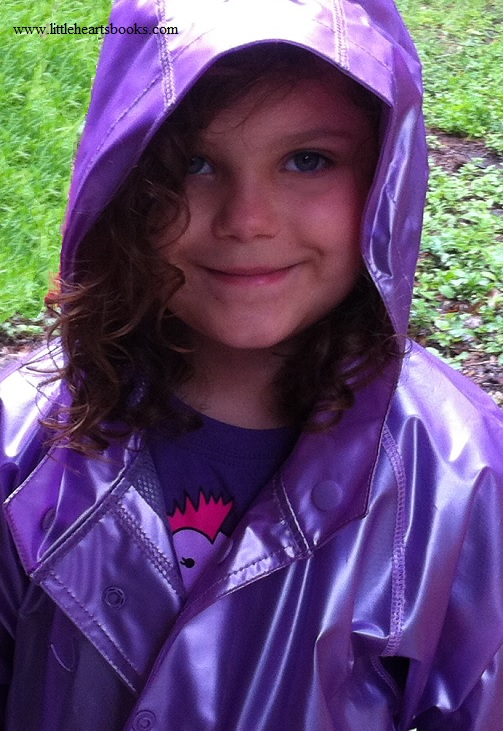 Parents often ask how they can gently and effectively approach a parent who is berating or smacking or otherwise mistreating their child. While the reality is that there is no way to intervene without offending the parent, no matter how kindly it is done, that doesn’t necessarily mean we shouldn’t intervene. Obviously if we believe the child is in danger we should always contact the authorities immediately. Other times, though, there’s no real physical danger, but we can see the parent is out-of-control, is struggling with parenting, or is just too stressed or self-focused to care. What do we do then? Can we intervene in any meaningful, effective way? Should we even try?
Parents often ask how they can gently and effectively approach a parent who is berating or smacking or otherwise mistreating their child. While the reality is that there is no way to intervene without offending the parent, no matter how kindly it is done, that doesn’t necessarily mean we shouldn’t intervene. Obviously if we believe the child is in danger we should always contact the authorities immediately. Other times, though, there’s no real physical danger, but we can see the parent is out-of-control, is struggling with parenting, or is just too stressed or self-focused to care. What do we do then? Can we intervene in any meaningful, effective way? Should we even try?
To answer, let me first me share with you an interesting encounter my seven-year-old little funnyface had recently. She was away from me for four hours in a backstage room with around forty other two- to seven-year-olds for their second ballet recital of the day. A parent volunteer in the room apparently lost her temper with her five-year-old, grabbed her arm, and dragged her across the room with her daughter screaming and fighting to get away, then shoved her in a corner, yelled at her, and pinched her among other things. My seven-year-old related this to me on our way home from her recital and said:
“I saw the mom was having trouble balancing her temper, and I wanted to help her and her poor little girl in the pretty blue ballet dress. The mom cornered the little blue girl and kept yelling and pinching her and flicking her. So I went to her and told her that my mom wrote gentle parenting books and asked if I could have her address so I could ask you to send her one. She didn’t respond to me, but her friend who was there asked for your name, so I told her and she looked it up on her phone and found your books. And then I heard the mad mom tell her friend that she just didn’t know what to do. I said to her that she gets that reaction from her daughter because that’s the reaction she gives to her daughter. I told her that it was like putting a trail of gas all the way to her home because the fire will follow the gas and make the house on fire. Because, you know, anger is like fire. She didn’t talk to me, but her friend did, the one who looked your books up on her phone. I told her that if her friend didn’t know what to do, she just had to listen, because then she would know what to do. Listening is always the first step. And I said to her that kids aren’t just, you know, like things or nothings, we’re people. I wasn’t mean to her, mama. I was very kind when I talked to her even though she didn’t listen to me or talk to me back. I was kind because I wanted her to see how nice kindness felt, then maybe she would want to be kind, too.”
Did the mother suddenly decide to change her parenting? No. But her friend overheard the exchange and wanted to know more. Did the “little blue girl” escape the manhandling and anger of her mother’s adult temper tantrum? No. but she, too, overheard my daughter’s words, and she saw that someone cared. No one can possibly measure the impact a single moment of kindness has on another soul.
And what about my little funnyface? Children learn what they live. They imitate what they see their parents, their most powerful role models, doing. My children have seen me gently intervene on a number of occasions when a parent was out-of-control. They have patiently waited for my attention while I answered a parent’s email or message asking for help with a parenting issue. The older ones have proofread my books, and the younger ones have offered ideas for chapter titles and book covers. They have seen gentle parenting advocacy at work, day in and day out.
Children really do learn what they live. They also walk out what they learn in their own unique way. One of my six, my oldest daughter, went into psychology and became a Family Therapist. She now works with Social Services trying to help families at risk before their children end up in foster care. Another one feels other children’s distress so deeply that we’ve had to leave shops, restaurants, and parks because she gets so upset by ‘normal’ parenting, but she writes her feelings rather than confronting people directly. One day you’ll see her thought-provoking children’s books on store shelves, mark my words. My seven-year-old, as evidenced by the vignette above, is very much like her oldest sister, ready to take on the world in defense of the defenseless.
The value of stepping in when a parent is struggling with their parenting cannot be measured by the parent’s response alone. The parent will most likely be offended and respond negatively, if at all. That momentary break in the parental meltdown, though, does often give the parent a chance to pull themselves together and regain some semblance of control.
But far beyond the value of the moment is the value of a child, helpless in the hands of an angry parent, seeing that someone cares. Of far greater worth than the momentary discomfort of confrontation is the courage and willingness to confront with kindness. And the value goes on and on, in the life of the child, in the hearts of those who overhear and those who hear about it later, and in the life and heart and mind of those courageous enough to meet wrongs head-on and to do so with gentleness.
That value lives on in the beautiful heart and brave spirit of my sweet girl, my little funnyface, my seven-year-old gentle parenting advocate. She is the very definition of my motto, “Changing the World, One Little Heart at a Time.”
If you are confronted with a situation in which a parent or other adult is mistreating a child, don’t hesitate to call authorities if the mistreatment constitutes abuse. But if the adult’s actions wouldn’t be considered abuse by authorities (even if you think they should), here are some ways to step in with the same gentleness and respect with which you would like the adult to treat the child:
- Walk over and speak to the child, quietly asking them what’s wrong and if you can help. Most adults won’t appreciate that, and it’s unlikely that you’ll be able to follow through with your offer, but the child will get the message that they aren’t alone in this world.
- Walk over and speak to the adult, calmly observing that you can see that they are having a hard time and you’d like to help. More often than not they’ll tell you to mind your own business, but sometimes they will unleash some of their frustrations in a torrent of complaints and you may be able to offer some constructive suggestions. Either way, the child will get the message that someone cares.
- Walk over and speak to both the adult and the child at the same time with a friendly smile and share that you’ve been there and understand the frustrations both of them are feeling. Ask if you can help with some suggestions about things that have helped you in similar situations in the past. The adult will often still react negatively, but the child will get the message that there is another way.
Giving the adult a chance to regain control of themselves and to remember that others are watching may at least temporarily stop the mistreatment. More importantly, however, the goal is to help the child feel less alone, less helpless, and more cared for. Never forget that an act of kindness in the life of a child has a ripple effect that expands immeasurably, affecting not only their present, but also impacting who they will become and how they, themselves, will treat others in the future. We may never see the results, but we can rest assured that, “”No act of kindness, no matter how small, is ever wasted.” – Aesop
Related posts:
The Gift of a Strong-Willed Child
Backtalk is Communication…LISTEN
When Children Act Out ~ Reflecting Our Emotions
Bridge Over Troubled Waters~Parenting a ‘Problem’ Child
The Incredible Power of the Whisper
The Taming of the Tantrum: A Toddler’s Perspective
Changing the World, One Little Heart at a Time
Practical, Gentle, Effective Discipline
 Award-winnning author, L.R.Knost, is the founder and director of the children's rights advocacy and family consulting group, Little Hearts/Gentle Parenting Resources, and Editor-in-Chief of Holistic Parenting Magazine. Books by L.R.Knost include Whispers Through Time: Communication Through the Ages and Stages of Childhood ; Two Thousand Kisses a Day: Gentle Parenting Through the Ages and Stages ; The Gentle Parent: Positive, Practical, Effective Discipline ; and Jesus, the Gentle Parent: Gentle Christian Parenting the first four books in the Little Hearts Handbook gentle parenting series, and children’s picture books Petey’s Listening Ears and the soon-to-be-released Grumpykins series.
Award-winnning author, L.R.Knost, is the founder and director of the children's rights advocacy and family consulting group, Little Hearts/Gentle Parenting Resources, and Editor-in-Chief of Holistic Parenting Magazine. Books by L.R.Knost include Whispers Through Time: Communication Through the Ages and Stages of Childhood ; Two Thousand Kisses a Day: Gentle Parenting Through the Ages and Stages ; The Gentle Parent: Positive, Practical, Effective Discipline ; and Jesus, the Gentle Parent: Gentle Christian Parenting the first four books in the Little Hearts Handbook gentle parenting series, and children’s picture books Petey’s Listening Ears and the soon-to-be-released Grumpykins series.
12 Tips for Gently Parenting Your Adult Children (Hint: It starts when they’re newborns)
[Portions reprinted from Two Thousand Kisses a Day: Gentle Parenting Through the Ages and Stages by L.R.Knost. Whispers Through Time: Communication Through the Ages and Stages of Childhood; The Gentle Parent: Positive, Practical, Effective Discipline; and Jesus, the Gentle Parent: Gentle Christian Parenting also available on Amazon and through other major retailers.]
~~~~~~~~~~~~~~~~~~~~~
“Life is a succession of lessons which must be lived to be understood.” ~Ralph Waldo Emerson
 All stages of parenting come with their own unique learning curve, their own challenges and frustrations, their own compromises and sacrifices, and their own flubs, false steps, and failures. From those first terror-stricken days with a newborn to the sleep-deprived months of infancy to the challenges of toddlerhood and beyond, parenting is a journey, not a destination. And when subsequent little ones arrive, the journey starts all over again as we discover that the lessons learned from parenting one child don’t always apply to the next as each have their own incomparable personalities, quirks, and individual identities.
All stages of parenting come with their own unique learning curve, their own challenges and frustrations, their own compromises and sacrifices, and their own flubs, false steps, and failures. From those first terror-stricken days with a newborn to the sleep-deprived months of infancy to the challenges of toddlerhood and beyond, parenting is a journey, not a destination. And when subsequent little ones arrive, the journey starts all over again as we discover that the lessons learned from parenting one child don’t always apply to the next as each have their own incomparable personalities, quirks, and individual identities.
The principles of gentle parenting (connection, empathy, respect, etc.) don’t change as our children grow, just as they don’t change from one child to the next. What does change is our understanding of those principles as we grow in wisdom and experience as parents and as human beings. The practical application of gentle parenting principles, though, can look very different from child to child and life stage to life stage. For instance, with an introverted child gentle parenting might involve a greater degree of physical proximity and emotional support whereas with a very extroverted child it may involve a greater degree of energy direction and respectful guidance.
This constancy of principles and individualized application of gentle parenting is no less true when parenting our adult children than it is when parenting our minor children. As gentle parents, we are our children’s first and best friend in the purest and truest definition of friendship. That sets the stage for the transition from the early parent/friend years to the parent-friendship that will characterize our relationship when our children grow into adulthood.
Here are 12 practical tips for gently parenting your adult children:
1.) Begin to consciously pay attention to your own parents’ interactions with you. Mentally catalog what you find helpful and what you find intrusive, what is an acceptable level of involvement, advice, and interaction and what feels overbearing or lacking. Make a mental note (or make actual notes if you’re a list person like me) to remember those feelings when your own children become adults.
2.) Remember, parenting is literally ‘on the job’ learning. Your parents are discovering by trial and error (often lots of error) what their roles and boundaries are in this uncharted territory of parenting adults. Model giving your parents grace when they overstep or underplay their roles. This will set the stage for your children to extend the same grace to you when seemingly overnight you suddenly find yourself learning to parent your own adult children.
3.) While your child is an infant, meet their needs swiftly, consistently, and gently. They won’t remember what you did or didn’t do at this stage, but they will always carry with them the safety, security, and love that they feel in your responsiveness, and that is they will take with them into adulthood.
4.) When your child reaches toddlerhood, focus on connection rather than correction. What will matter most in later years won’t be whether they wore matching shoes or left the park without pitching a fit. What will matter is whether they felt heard, understood, and respected.
5.) As your child moves into the preschool and early childhood years, focus on communication, whether that takes the form of whining, tattling, endless questions or some combination of all three. Continue to build a trust relationship by hearing their heart rather than their tone and responding with gentle guidance.
6.) When your child reaches the middle stages of childhood, listening to the endless stories from your chatterbox or offering empathy and quiet support to your dreamer will help them as they explore who they are and who they want to be when they grow up. You are building the friendship of a lifetime in these interactions, so make them a priority.
7.) Once your child enters the teen years, consciously begin to gradually shift your role into a supporting rather than a leading act. Listen not to their words, their attitudes, their hormones, their angst. Listen instead to their struggles, their hopes, their dreams, their fears. Remember, you are the only adult in the relationship at this point. They still have a lot of maturing to do. Practice self-control. Be honest about your own struggles, fears, and failings. You’ll be amazed at what a connection point that is as your teen discovers that they aren’t alone in their humanness. Be the first one to listen, the first one to forgive, the first one to apologize, the first one to understand, the first one to back down and try to find another way when the going gets tough.
8.) When your child becomes an adult, let them set the pace. Some children will hit eighteen and be ready to move into a university dorm or get a job and an apartment right away. Others will need a slower transition. They may need to stay at home while going to university or while taking some time to try out different jobs as they explore this strange new world of adulthood. There’s nothing wrong with adult children living at home, especially in difficult economic times such as these, but if the time comes that you feel they need a gentle nudge out of the nest you can help them to find an acceptable roommate or two and guide them through the process of settling into independent adulthood.
9.) Once your child is out on their own, your role will shift fully to a support system. Offering unsolicited advice is fine as long as it is briefly stated…once. After that, it becomes intrusive. Offers of help and invitations to family events, etc. should follow the same guidelines.
10.) When your child starts a family of their own, consciously bring to mind how you felt at various times when your own parents supported you in your new role and/or interfered with the establishment of your new little family. Acknowledge to yourself (and to them) that they won’t do everything the way you did, that they will make decisions you wouldn’t make, that you will offer advice that won’t be heeded, and that they will make mistakes and have to learn from them just like you did, and remind yourself that those things are all perfectly okay.
11.) On the subject of making mistakes, remember, just as you wouldn’t want every youthful mistake, every wrong choice, every unfortunate decision to be broadcast to the world or even just joked about privately instead of being left in the past where it belongs, be sure to practice ‘The Golden Rule of Parenting’ and treat your children how you prefer to be treated.
12.) Keep in mind that the person you are now isn’t the person you were when you first started out on your journey into adulthood. Expecting your young adult children to think and experience and process life and events the way that you do now is like expecting a newborn baby to be able to pick up a book and read it. So set aside your expectations and just offer your support as they learn to navigate the world of adulthood on their own.
Remember, our life experience can help our adult children, but they need to gain their own life experiences. Our role as parents of adults is to find the balance between too much and too little of pretty much everything: advice, help, assistance, involvement, etc. The voice of experience has an immense amount of wisdom to offer, but only if it also has the wisdom to know when to remain silent.
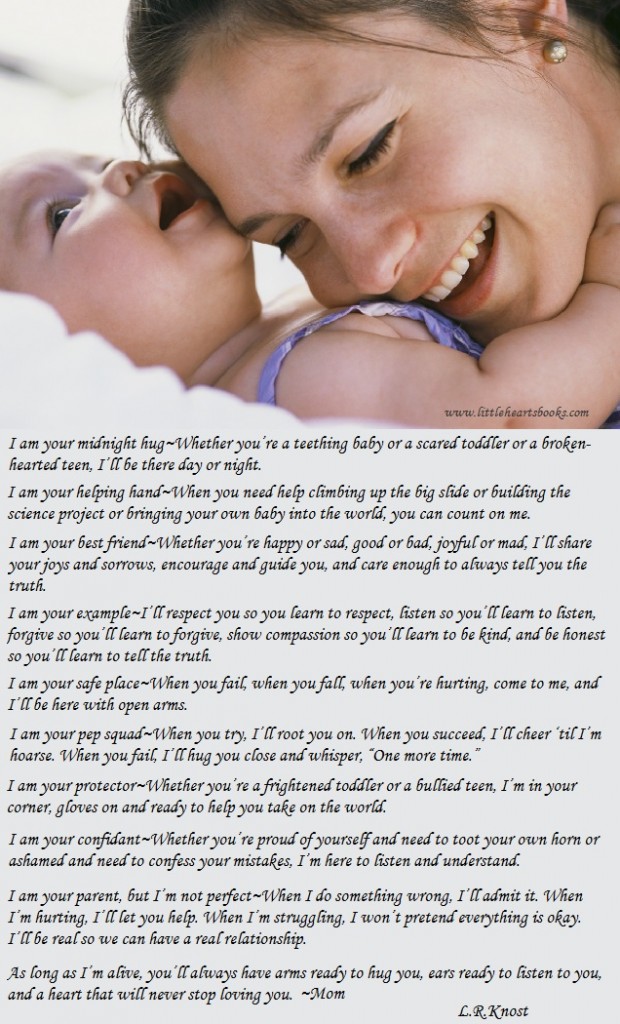
Related posts:
Backtalk is Communication…LISTEN
The Gift of a Strong-Willed Child
Bridge Over Troubled Waters~Parenting a ‘Problem’ Child
Two Thousand Connection Points a Day: Attachment Parenting Beyond Infancy
A Boy, A Girl, and A Baby~Journey to Gentle Parenting
 Award-winnning author, L.R.Knost, is the founder and director of the children's rights advocacy and family consulting group, Little Hearts/Gentle Parenting Resources, and Editor-in-Chief of Holistic Parenting Magazine. Books by L.R.Knost include Whispers Through Time: Communication Through the Ages and Stages of Childhood ; Two Thousand Kisses a Day: Gentle Parenting Through the Ages and Stages ; The Gentle Parent: Positive, Practical, Effective Discipline ; and Jesus, the Gentle Parent: Gentle Christian Parenting the first four books in the Little Hearts Handbook gentle parenting series, and children’s picture books Petey’s Listening Ears and the soon-to-be-released Grumpykins series.
Award-winnning author, L.R.Knost, is the founder and director of the children's rights advocacy and family consulting group, Little Hearts/Gentle Parenting Resources, and Editor-in-Chief of Holistic Parenting Magazine. Books by L.R.Knost include Whispers Through Time: Communication Through the Ages and Stages of Childhood ; Two Thousand Kisses a Day: Gentle Parenting Through the Ages and Stages ; The Gentle Parent: Positive, Practical, Effective Discipline ; and Jesus, the Gentle Parent: Gentle Christian Parenting the first four books in the Little Hearts Handbook gentle parenting series, and children’s picture books Petey’s Listening Ears and the soon-to-be-released Grumpykins series.
Painting the World
Homeschooling is so fun 🙂 My children have been asking questions lately about where different countries are, so I let their interest inspire us to take a trip ‘around the world.’ Of course, I can’t afford a vacation even as far as the beach right now, and it’s only forty-five minutes away! So our trip must, of necessity, be a virtual one. But that doesn’t mean it has to be a boring one!
are, so I let their interest inspire us to take a trip ‘around the world.’ Of course, I can’t afford a vacation even as far as the beach right now, and it’s only forty-five minutes away! So our trip must, of necessity, be a virtual one. But that doesn’t mean it has to be a boring one!
First, we took a look at our globe and found Florida (where we live) as a point of reference. Then we searched together for the places my children wanted to ‘visit’ and talked about how they’d get there. My Renaissance Girl was all about taking cruise ships and planes, but my Little Caboose suggested submarines, hot air balloons, and flying saucers, among other things. (All clear contenders for ocean crossing, clearly! She did specify that we couldn’t take a train or swim across, though.)
 Then, we got a big blue bouncy ball, some shaving cream, green food coloring, bowls, some painting sponges, and went to work. A great big dollop of shaving cream and a few drops of green food coloring was all it took to make washable ‘paint’ for our super-sized globes. (Everybody was dyed green wherever the shaving cream touched, lol, but it all washed off with soap easily when we were finished.) The girls took turns making their own globes. With the younger ones, I named the continents they were creating and pointed out where we lived in relation. With my older one, I asked where certain
Then, we got a big blue bouncy ball, some shaving cream, green food coloring, bowls, some painting sponges, and went to work. A great big dollop of shaving cream and a few drops of green food coloring was all it took to make washable ‘paint’ for our super-sized globes. (Everybody was dyed green wherever the shaving cream touched, lol, but it all washed off with soap easily when we were finished.) The girls took turns making their own globes. With the younger ones, I named the continents they were creating and pointed out where we lived in relation. With my older one, I asked where certain continents/countries were, and she pointed them out. Then she got all ‘topographical’ and wanted to add in mountains and volcanoes, which was fun and made for her own unique spin on the globe (pun intended!).
continents/countries were, and she pointed them out. Then she got all ‘topographical’ and wanted to add in mountains and volcanoes, which was fun and made for her own unique spin on the globe (pun intended!).
 We wanted to use a great big blue exercise ball, but ‘somehow’ mine got popped the last time my children were playing with it, and I didn’t want to spend $20 on a new one, so I bought a big bouncy ball from Walmart for $2.50 instead. I’ll probably spring (Sorry, I can’t help myself, lol) for the big ball when we do latitude and longitude, though, because it’s already got the lines of latitude on it!
We wanted to use a great big blue exercise ball, but ‘somehow’ mine got popped the last time my children were playing with it, and I didn’t want to spend $20 on a new one, so I bought a big bouncy ball from Walmart for $2.50 instead. I’ll probably spring (Sorry, I can’t help myself, lol) for the big ball when we do latitude and longitude, though, because it’s already got the lines of latitude on it!
Next, we’re going to hang a twin-sized white sheet on the wall and project a world map on it so we can trace it. Then we’ll use fabric paints and markers to color it and label the oceans, continents, countries, and major cities. It’ll be an ongoing project with my children creating art that reflects the regions, drawing in landmarks such as The Great Wall of China, The Sphinx, Mt. Rushmore, and whatever else fires their imaginations. And when we’re done, it’ll be our special occasion tablecloth (with a clear tablecloth over it for protection) and the clear tablecloth will function as a dry erase board when we pull out our map mural for other geography projects. So fun! (I’ll post updates as we progress. 🙂 )
Here are some other sites that have great ideas we’ll be checking out, too!
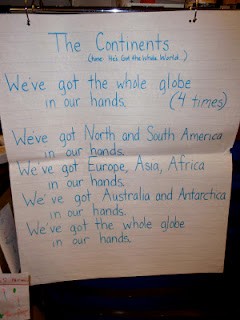 This site seems to have disappeared, but this was a cute idea for learning the continents…sing them to ‘He’s Got the Whole World in His Hands.’
This site seems to have disappeared, but this was a cute idea for learning the continents…sing them to ‘He’s Got the Whole World in His Hands.’
 Love this idea from All of a Kind Family!
Love this idea from All of a Kind Family!
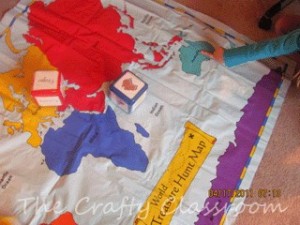 This looks like so much fun from The Crafty Classroom!
This looks like so much fun from The Crafty Classroom!
More to come!
Related posts:
In the world of a child wonders are as simple as sticks and sheets, leaves and books, boxes and giggles, and the promise in a rainy day. The Seven Wonders of the World of Childhood
Children who love to read…READ! Engaging children’s hearts in the wonder of reading instead of just training their minds in its mechanics. Raising Bookworms
Think homeschooled children are unsocialized, over-controlled, locked-away-from-the-world misfits? Think again! My Renaissance Girl
On a Winnie the Pooh style ‘long explore’ my little Pooh Bear discovered the world in ways only a toddler can do in…The Many Adventures of My Little Pooh Bear
Raising Super Readers~The MARVELous Power of Comic Books!
Playground Confessions~Look Who’s Talking!
Alphabet Fun~Imagination From A to Z!
Making Money Matters Make Cents
 Award-winnning author, L.R.Knost, is the founder and director of the children's rights advocacy and family consulting group, Little Hearts/Gentle Parenting Resources, and Editor-in-Chief of Holistic Parenting Magazine. Books by L.R.Knost include Whispers Through Time: Communication Through the Ages and Stages of Childhood ; Two Thousand Kisses a Day: Gentle Parenting Through the Ages and Stages ; The Gentle Parent: Positive, Practical, Effective Discipline ; and Jesus, the Gentle Parent: Gentle Christian Parenting the first four books in the Little Hearts Handbook gentle parenting series, and children’s picture books Petey’s Listening Ears and the soon-to-be-released Grumpykins series.
Award-winnning author, L.R.Knost, is the founder and director of the children's rights advocacy and family consulting group, Little Hearts/Gentle Parenting Resources, and Editor-in-Chief of Holistic Parenting Magazine. Books by L.R.Knost include Whispers Through Time: Communication Through the Ages and Stages of Childhood ; Two Thousand Kisses a Day: Gentle Parenting Through the Ages and Stages ; The Gentle Parent: Positive, Practical, Effective Discipline ; and Jesus, the Gentle Parent: Gentle Christian Parenting the first four books in the Little Hearts Handbook gentle parenting series, and children’s picture books Petey’s Listening Ears and the soon-to-be-released Grumpykins series.
When Children Hit~10 Tips for Parents
[Portions reprinted from The Gentle Parent: Positive, Practical, Effective Discipline by L.R.Knost. Two Thousand Kisses a Day: Gentle Parenting Through the Ages and Stages and Whispers Through Time: Communication Through the Ages and Stages of Childhood also available on Amazon and through other major retailers.]
 Toddlers and preschoolers are still in the early stages of learning to communicate verbally. Add to that the fact that they have little-to-no impulse control and very immature social skills, and you’ve got a recipe for an instinctive physical response (i.e. hitting, kicking, biting, hair pulling, throwing things, etc.) to situations in which they are frustrated, angry, scared, or just tired and out-of-sorts.
Toddlers and preschoolers are still in the early stages of learning to communicate verbally. Add to that the fact that they have little-to-no impulse control and very immature social skills, and you’ve got a recipe for an instinctive physical response (i.e. hitting, kicking, biting, hair pulling, throwing things, etc.) to situations in which they are frustrated, angry, scared, or just tired and out-of-sorts.
Many parents who practice gentle discipline wonder where their little one picked up the behavior, not realizing that it is a normal and age-appropriate reaction, albeit an unacceptable one. Very often parents are advised to spank their child to train them not to hit others, especially those who are smaller and weaker than they are. (more…)
 Award-winnning author, L.R.Knost, is the founder and director of the children's rights advocacy and family consulting group, Little Hearts/Gentle Parenting Resources, and Editor-in-Chief of Holistic Parenting Magazine. Books by L.R.Knost include Whispers Through Time: Communication Through the Ages and Stages of Childhood ; Two Thousand Kisses a Day: Gentle Parenting Through the Ages and Stages ; The Gentle Parent: Positive, Practical, Effective Discipline ; and Jesus, the Gentle Parent: Gentle Christian Parenting the first four books in the Little Hearts Handbook gentle parenting series, and children’s picture books Petey’s Listening Ears and the soon-to-be-released Grumpykins series.
Award-winnning author, L.R.Knost, is the founder and director of the children's rights advocacy and family consulting group, Little Hearts/Gentle Parenting Resources, and Editor-in-Chief of Holistic Parenting Magazine. Books by L.R.Knost include Whispers Through Time: Communication Through the Ages and Stages of Childhood ; Two Thousand Kisses a Day: Gentle Parenting Through the Ages and Stages ; The Gentle Parent: Positive, Practical, Effective Discipline ; and Jesus, the Gentle Parent: Gentle Christian Parenting the first four books in the Little Hearts Handbook gentle parenting series, and children’s picture books Petey’s Listening Ears and the soon-to-be-released Grumpykins series.
Picky Eater? Here’s Help!
[Reprinted from Two Thousand Kisses a Day: Gentle Parenting Through the Ages and Stages by L.R.Knost. Whispers Through Time: Communication Through the Ages and Stages of Childhood and The Gentle Parent: Positive, Practical, Effective Discipline also now available on Amazon and through other major retailers.]
~~~~~~~~~~~~~~~~~~~~~
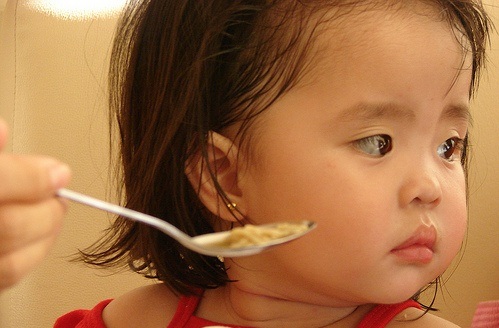 I was one of those children who was incredibly picky when it came to food and, despite my mom’s gently enforced ‘one bite rule,’ I went on to become an incredibly picky eater as an adult, as well. I vividly remember as a young child gagging as I tried to force down a bite, my throat feeling like it was closing up, and like there was no way food was going to fit through there. As a very compliant child, it bothered me immensely to disappoint my mom, and, being the logical person that I was even at that young age, I remember feeling that her expectations were very reasonable and being frustrated at my own inability to comply.
I was one of those children who was incredibly picky when it came to food and, despite my mom’s gently enforced ‘one bite rule,’ I went on to become an incredibly picky eater as an adult, as well. I vividly remember as a young child gagging as I tried to force down a bite, my throat feeling like it was closing up, and like there was no way food was going to fit through there. As a very compliant child, it bothered me immensely to disappoint my mom, and, being the logical person that I was even at that young age, I remember feeling that her expectations were very reasonable and being frustrated at my own inability to comply.
Fast forward a few years to when I began having children of my own and needed to make parenting decisions about everything from breastfeeding to cosleeping to discipline. On my journey to gentle parenting I revisited my childhood memories often, finding myself appreciating my mom’s gentleness and her way of using silliness to help me see the ‘silver lining’ in life when things were hard. In some things, I chose to follow the parenting path my mom took, and in others I took a different course and blazed my own trail.
When I was at university, I worked as a certified nutrition consultant with a focus on natural approaches to nutrition, health, and fitness. I took that knowledge, along with my studies in developmental psychology, human behavior, and communication, and incorporated all of it into my parenting decisions.
As I muddled through the toddler years with my firstborn, I decided to take an approach to nutrition that was unheard of, as far as I knew. I would offer to nurse, offer the food on my plate, and offer food I’d made specifically for him, and then let my little man decide. That was the beginning of our baby led weaning, though I didn’t know that term at the time.
What I discovered then and have seen proven time and again through the years with my own six very different children as well as with the families I’ve worked with is that, given the freedom to choose, children will generally experiment with more textures and tastes than if they are forced to eat their parents’ choice of food for them. It’s simply human nature that, if a child (or an adult, for that matter!) knows that they don’t have to try a new food and that they can run to the trashbin and spit it out if they do try it and don’t like it, then they are far, far more likely to give it a chance. And if they don’t try it the first time it’s offered, or if they do try it and don’t like it, making it available again off and on in the future will give them more opportunities to try the food and perhaps end up liking it when their tastes mature a bit more.
In our home, my children know that if they don’t like what’s being served for a meal there is always an alternative in the form of a PB&J or a reheat later if they just aren’t hungry at mealtime, though if we’re sitting down together I do expect them to sit with the family and chat with us while we eat. Even if they like the food being served, they may not feel hungry for a heavy meal just then or perhaps the last time they ate that meal their tummy got upset or maybe there are other reasons they don’t want the meal that they simply can’t articulate. As the adult, I can choose to make an issue out of it and end up in an unnecessary power struggle, or I can choose to offer my children the same respect I offer myself, because you can bet your bottom dollar that if I don’t want to eat something, I’m not eating it!
Among the many benefits of this approach, beyond the greater propensity for a child to experiment with tastes and textures and beyond the elimination of mealtime battles, I also saved myself a ton of mommy guilt through the years. I had no way of knowing early on that my renaissance girl had Sensory Processing Disorder which was strongly affecting her ability to eat or that my little caboose was missing an enzyme and couldn’t eat meat. Had I spent their toddler years forcing foods on them and engaging in coercive or punitive mealtime parenting, the damage to our relationship, not to mention their health, could have been disastrous. Additionally, children who feel powerless over their lives can begin trying to recapture a sense of power by exercising excessive control over their eating with the danger of a resulting eating disorder when they get into their teen years.
So, on a practical level how do you get a toddler or preschooler to eat? Well, first and foremost, rigidly scheduling mealtimes creates a battleground in and of itself. Toddlers’ and preschoolers’ ever-shifting growth patterns cause them to go through slow-growth periods where they simply aren’t hungry and other periods where they’re hungry 24/7! Grazing, or eating multiple small meals and snacks throughout the day, not only fits these growth patterns better, but is actually a much healthier way for all of us to eat because it stabilizes blood sugar which, when low, leads to overeating as does simply eating because ‘it’s time.’ Teaching our little ones to listen to their bodies’ hunger cues is a hugely positive step toward avoiding obesity later in life, as well!
Secondly, a combination of keeping little ones active so they work up a good appetite (which also sets them on the path toward an active physical lifestyle!) and offering a variety of healthy foods throughout the day will typically be all it takes to meet their nutrition requirements. As a general guideline, toddlers and preschoolers need:
- Two to three servings of dairy (i.e. 1 oz. cheese, ½ cup milk, ½ cup yogurt);
- Four to six servings of grains (i.e. ½ slice bread, ½ cup non-sugared cereal, ¼ cup pasta, 2 crackers);
- Two servings of protein (i.e. two 1” squares of chicken, fish, or beef);
- Two to three servings of veggies (i.e. 2 tbs peas, corn, cauliflower, etc);
- And two to three servings of fruit (i.e. ½ banana, apple, orange, etc., ¼ cup raisins, blueberries, raspberries, 3-4 strawberries or grapes, etc)
Here are some fun ways to invite your little ones to make healthy eating choices:
~Breakfast ideas~

- Need an easy and healthy breakfast for little ones? Try an ice cream cone filled with almonds & bite sized chunks of fruit & cheese!
- Start little people’s day healthy & happy. Make a smiley face clock on their plate with almonds, cheese & fruit with yogurt to dip them in!
- Try making ‘apple cookies’ (apples sliced into round discs) into faces with almonds, raisins & cheese!
- Sundae breakfast! Yogurt sprinkled with granola & raisins & nuts & drizzled with local honey (helps control seasonal allergies, too), yummy! *Note: Never feed honey to a baby under a year old.

- Here comes the sun! Make frozen pancakes more healthy by surrounding them with fruit & topping with berries & almonds & drizzling with local honey!
~Lunch ideas~

- Banana Boats~Slice of whole wheat bread spread with peanut butter & local honey & wrapped around a banana. Top with just a sprinkle of brown sugar for a treat!
- Double Trouble~Celery, carrot & pretzel sticks with a scoop of cottage cheese & a scoop of peanut butter for double dipping!
- Picasso PB&J’s~Round whole wheat flat bread with small dollops of peanut butter, fruit preserves & yogurt around the edge in a colorful palate with pretzel sticks for paint brushes!
~Dinner ideas~
- Boil some cauliflower, carrots, zucchini & yellow squash until a bit mushy & puree.
1) Mix with your favorite meatloaf recipe for a hidden veggie serving!
2) Mix with spaghetti sauce & freeze in single serving containers.

- Spaghetti Twisters~Make rotini noodles instead of spaghetti noodles for a cute ‘twist’ and add your special spaghetti sauce for a tornado of veggie goodness!
- Pizza Racers~Use rectangular flatbread & lightly coat with olive oil and broil for a couple of minutes to crisp it up, then add your souped-up spaghetti sauce & let your little ones top with mozzarella ‘racing stripes’ & pepperoni ‘racing tires’ for a super-charged dinner!

- Pureed cauliflower also works great mixed with mac & cheese, stuffing, and mashed potatoes for a hidden veggie to round out any meal!
Related posts:
Toddlers, Tantrums, and Time-Ins, Oh My!
Practical Gentle Discipline Guide
Tots to Teens~Communication Through the Ages and Stages
A Place to Rest~Becoming Your Child’s Safe Harbor
Love in the Time of Cosleeping
Your Baby isn’t Trying to Annoy You; He’s Trying to Communicate!
 Award-winnning author, L.R.Knost, is the founder and director of the children's rights advocacy and family consulting group, Little Hearts/Gentle Parenting Resources, and Editor-in-Chief of Holistic Parenting Magazine. Books by L.R.Knost include Whispers Through Time: Communication Through the Ages and Stages of Childhood ; Two Thousand Kisses a Day: Gentle Parenting Through the Ages and Stages ; The Gentle Parent: Positive, Practical, Effective Discipline ; and Jesus, the Gentle Parent: Gentle Christian Parenting the first four books in the Little Hearts Handbook gentle parenting series, and children’s picture books Petey’s Listening Ears and the soon-to-be-released Grumpykins series.
Award-winnning author, L.R.Knost, is the founder and director of the children's rights advocacy and family consulting group, Little Hearts/Gentle Parenting Resources, and Editor-in-Chief of Holistic Parenting Magazine. Books by L.R.Knost include Whispers Through Time: Communication Through the Ages and Stages of Childhood ; Two Thousand Kisses a Day: Gentle Parenting Through the Ages and Stages ; The Gentle Parent: Positive, Practical, Effective Discipline ; and Jesus, the Gentle Parent: Gentle Christian Parenting the first four books in the Little Hearts Handbook gentle parenting series, and children’s picture books Petey’s Listening Ears and the soon-to-be-released Grumpykins series.
Death of a Butterfly: Helping Children Cope with Loss

[Reprinted from Two Thousand Kisses a Day: Gentle Parenting Through the Ages and Stages by L.R.Knost. Whispers Through Time: Communication Through the Ages and Stages of Childhood and The Gentle Parent: Positive, Practical, Effective Discipline also now available on Amazon and through other major retailers.]
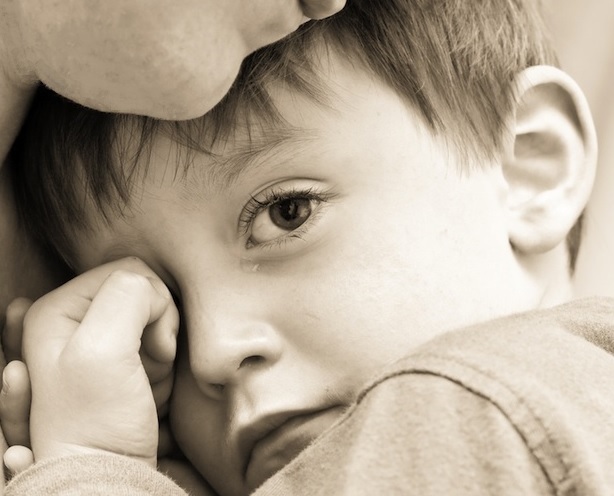 My little Funny Face accidentally killed a butterfly today. Her sweet little heart is broken, poor thing. We’re walking through the stages of mourning together as I use these small (to us adults) losses to equip her with healthy tools for handling the difficult things life will surely bring through the years, as it does to all of us. Whether it’s the death of a butterfly, the loss of a favorite stuffed animal, or another loss that matters to them deeply, guiding children through their uncomfortable and often overwhelming emotions is something parents are often unprepared to handle. Here are the steps we take together when life gets hard and loss becomes a reality to my children:
My little Funny Face accidentally killed a butterfly today. Her sweet little heart is broken, poor thing. We’re walking through the stages of mourning together as I use these small (to us adults) losses to equip her with healthy tools for handling the difficult things life will surely bring through the years, as it does to all of us. Whether it’s the death of a butterfly, the loss of a favorite stuffed animal, or another loss that matters to them deeply, guiding children through their uncomfortable and often overwhelming emotions is something parents are often unprepared to handle. Here are the steps we take together when life gets hard and loss becomes a reality to my children:
1.) Feeling~The first step is simply allowing my children to feel their emotions. If they’re crying, I listen to their cues to know when to offer hugs or if they need some time alone or just someone to sit quietly next to them. If they’re angry, I watch closely to see if they need some directions for a safe outlet such as punching a pillow or going outside to kick a ball or if they are able to just stomp around and get it out that way. If they are unnaturally quiet, I let them know I’m there if they need me and then I leave them alone to sort through their emotions in their own time.
2.) Expressing~The second step is guiding my children to express their feelings in some tangible form. This step begins either when they initiate a conversation about the loss or when I see that their emotions are getting the best of them, indicating that they need some assistance in moving forward. This step may take the form of simply talking through what they are feeling, but typically it includes drawing a picture, making up a song or dictating a poem for me to write down for them, making a memory box, or some combination of each of them.
3.) Refocusing~The third and last step is giving my children ideas about how to move on. It’s often hard for them to figure out how to redirect their thoughts from constantly swirling around their loss. It takes a measure of mental maturity to be able to focus elsewhere when emotions are running high. This is not to say that they should never think about their loss again. I am always open to listening to their feelings and sharing their memories with them. This last step is just gently helping them to consciously shift their attention from what they have lost to what they still have, moving their thoughts from loss to life. This step often takes the form of encouraging them to head outside and play in the mud or climb a tree, or it might be offering to read them a favorite book or play a board game with them or maybe inviting a friend over to play.
While these three steps are in no way exhaustive, the idea behind this process is to simplify the stages of grief in a way that is accessible to parents and understandable to children. And then, when life hits hard and big losses occur such as the loss of a loved one, divorcing parents, etc. having walked through these small losses with our children sets the stage for helping them to work through the harder things while preserving a healthy parent/child connection.
When big life losses do occur, staying in tune with our children and letting them ask questions freely while we work to temper our answers in age appropriate terms is vital. Watching for changes in their behavior helps to give us clues as to what they’re feeling. If they start having trouble sleeping or resisting going to school or having meltdowns, etc. it might be helpful to seek out professional counseling for a brief time. We also need to keep in mind that small children have active imaginations and the line between fantasy and reality is very blurry for them. Death may not impact them much at all if the reality of it doesn’t sink in, or, on the flip side it could have a significant impact and they could begin to imagine all sorts of awful things happening to them or their family or friends. It’s important to let our children lead the way as to how we need to help them cope. Our local library or online at Goodreads or Amazon’s Listopia can also be good resources for age appropriate books on death and grief to share with our children. We do need to be sure to read through them ourselves first to make sure we’re comfortable with how things are presented, though.
Here is a brief, generic ‘script’ that can be used as a starting point for sharing difficult news about a loss with our children:
“I have something to tell you, and it’s a very hard thing. I want you to know that you are safe, and I’m safe, and I’m right here to help you, okay?”
(Give them time to respond.)
“Your (grandpa, aunt, friend, etc.), *name,* died. Do you know what ‘died’ means?”
(Give them time to respond.)
“It means they’re gone to (fill in your belief), and they won’t be coming back.”
(Give them time to respond.)
“It’s okay to be sad or even angry or scared. Those are normal emotions when people die. We are all very sad because we’re going to miss *name.*”
(Give them time to respond.)
“You’ll probably need some time to think about what happened, and you’ll probably have questions. That’s okay. And it’s okay to talk about *name,* too. We all are going to miss *name* and talking about them can help us to remember happy times with them.”
(Give them time to respond.)
“Would you like to make a goodbye card or a memory box? That might help you to feel better.”
Obviously this is a generic script that will need to be adapted based on a child’s responses, but it provides a starting point to open the conversation and begin to walk them through the grieving and healing process. Time does heal, but often it isn’t simply the passage of time that heals, but rather the support and comfort from those with whom we spend that time.
Related posts:
Children in the three to six-year-old age range are beginning to realize that their parents aren’t the all-powerful beings that they once believed them to be. This realization can be very uncomfortable for them, causing them a great deal of unease as they are concurrently beginning to realize that there is a whole, big, wide world beyond their safe, little home, a that the world is full of potential dangers, hazards unknown, and just a lot of really big, scary things. So what is a parent to do with their newly timid little house-mouse? The Age of Fear~Young Children and Anxiety
 Award-winnning author, L.R.Knost, is the founder and director of the children's rights advocacy and family consulting group, Little Hearts/Gentle Parenting Resources, and Editor-in-Chief of Holistic Parenting Magazine. Books by L.R.Knost include Whispers Through Time: Communication Through the Ages and Stages of Childhood ; Two Thousand Kisses a Day: Gentle Parenting Through the Ages and Stages ; The Gentle Parent: Positive, Practical, Effective Discipline ; and Jesus, the Gentle Parent: Gentle Christian Parenting the first four books in the Little Hearts Handbook gentle parenting series, and children’s picture books Petey’s Listening Ears and the soon-to-be-released Grumpykins series.
Award-winnning author, L.R.Knost, is the founder and director of the children's rights advocacy and family consulting group, Little Hearts/Gentle Parenting Resources, and Editor-in-Chief of Holistic Parenting Magazine. Books by L.R.Knost include Whispers Through Time: Communication Through the Ages and Stages of Childhood ; Two Thousand Kisses a Day: Gentle Parenting Through the Ages and Stages ; The Gentle Parent: Positive, Practical, Effective Discipline ; and Jesus, the Gentle Parent: Gentle Christian Parenting the first four books in the Little Hearts Handbook gentle parenting series, and children’s picture books Petey’s Listening Ears and the soon-to-be-released Grumpykins series.
The Age of Fear: 8 Tips to Help Young Children Cope with Anxiety
[Reprinted from Two Thousand Kisses a Day: Gentle Parenting Through the Ages and Stages by L.R.Knost. Whispers Through Time: Communication Through the Ages and Stages of Childhood and The Gentle Parent: Positive, Practical, Effective Discipline also now available on Amazon and through other major retailers.]
Your once fearless five-year-old suddenly refuses to leave your side at the park saying, “I’m afraid the birds will eat me,” while eyeing the tiny swallows hopping on the ground as if they’re evil geniuses plotting his demise.
Your three-year-old, whom you once found proudly grinning while sitting atop the refrigerator, has abruptly decided the swings are objects of abject terror that will, “Fly me to the ground.” (Translation: I’ll fall off!)
Your six-year-old who has slept like a log in his own bed for years is suddenly resisting bedtime and climbing into your bed with you at 3 am every. single. night.
Your happy little four-year-old suddenly becomes withdrawn and clingy, refusing to play with her playdate friends and wanting to sit in your lap. And, even worse, she’s started sucking her thumb again!
The preschool and early elementary school years are sometimes marred with exaggerated fears, odd anxieties, nightmares, night terrors, and other evidences of insecurity that can make the most confident of parents feel a combination of dismay, frustration, worry, and failure. Regression is a common accompaniment, from pottying accidents to night-waking to thumb-sucking. Often, acting-out behaviors also increase in this time period.
So, what in the world is going on?
No, it’s not an environmental-toxin-induced, super-early-onset of adolescent-hormone-overload. And, normally, it’s not a trauma-reaction to life changes such as moving or starting preschool or school, though those events can exacerbate the issue. (Be aware that these behaviors can, rarely, indicate an anxiety disorder, stress-overload, or abuse. If you suspect any of these things may be causing your child’s behavior, seek a professional evaluation.)
Typically, though, sudden anxiety behaviors in preschool/early elementary aged children are simply another normal stage of development, an indication of cognitive growth. In other words, as odd as it sounds, fear can be a sign of maturity!
Children in the three to six-year-old age range (Keep in mind that this is a rough age estimate. Children are individuals, not pre-programmed robots!) are beginning to realize that their parents aren’t the all-powerful beings that they once believed them to be. This realization can be very uncomfortable for them, causing them a great deal of unease as they are concurrently beginning to realize that there is a whole, big, wide world beyond their safe, little home, and that that world is full of potential dangers, hazards unknown, and just a lot of really big, scary things.
So what is a parent to do with their newly timid little house-mouse?
First, be aware that there is no one-size-fits-all miracle ‘cure.’ You know your child better than anyone else, and being responsive to her unique needs means taking your cues from her as to what may help or hinder her journey through this uncomfortable stage.
That said, here are some ideas that may help:
- Before forcing your child to ‘face his fears,’ consider whether someone throwing a spider on you if you are deathly afraid of spiders or locking you in a closet if you’re claustrophobic would be helpful to you in overcoming your fears. If the answer is ‘NO!’ then honor your child’s feelings and move on to another solution.
- When your child voices her concerns, resist the urge to minimize them. If she says, “I’m afraid of monsters coming in my window,” try not to say, “There’s no such thing as monsters.” Remember, she’s realizing you aren’t all-powerful, and that means you aren’t all-knowing, either! Rather than be reassured by your words, she’ll simply think you don’t know about the monsters and can’t help her and keep her safe. Instead, you can brainstorm ideas together to keep the monsters at bay. While you don’t want to say that monsters actually do exist, you can say something like, “Let’s think of ways to keep you safe. What if daddy throws the monsters away in the trashcans outside and the trashman takes them away?” Don’t be afraid to be seriously silly. In other words, take her fears seriously, but offer silly solutions that offer visuals of the monsters (or whatever the fear is) going away forever.
- Help your child to make a ‘nightmare safe’ out of a shoe box. At night
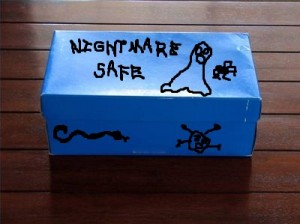 before he goes to bed, sit with him and encourage him to put all his scary thoughts in the box for you to take and keep safely away from him while he sleeps. Let him know that if he does have a bad dream, he can come to you even if it’s the middle of the night, and you’ll help him to put the scary dream in the box so he’ll be able to go back to sleep.
before he goes to bed, sit with him and encourage him to put all his scary thoughts in the box for you to take and keep safely away from him while he sleeps. Let him know that if he does have a bad dream, he can come to you even if it’s the middle of the night, and you’ll help him to put the scary dream in the box so he’ll be able to go back to sleep.
- Avoid phrases such as “You’re a big boy now” and “Only babies do that.” Focus instead on encouraging your child to do the things you know he can do. For instance, if he’s usually able to climb the ladder on the slide but gets ‘stuck’ halfway up and asks for help, start by moving near so he knows you are close and willing to help him if needed. Then verbally encourage him, “I know you can do it. I’m here if you need me.” But don’t pressure him. If he gets upset or insists he can’t do it, help him down. Remember, it isn’t really about the slide at all. It’s about seeking reassurance that you can still be trusted to take care of him, that he’s still safe with you.
-
 If the occasional monster in the closet or under the bed needs to be evicted, try reading a book like Go Away, Big Green Monster! and make your own ‘Monster-Away Spray,’ to send all the scary monsters packing. The ones we made didn’t match the colors in the book perfectly because we just used foam stickers and googlie eyes from our craft box and blue spray bottles from the bargain bin at the fabric store, but my girls were thrilled with them. We filled them with water (and added a little spritz of febreeze in my six-year-old’s bottle because, “Monsters can’t STAND flowers!”) and then Daddy and Big Brother took turns pretending to be monsters and ran away squealing from the girls when they got sprayed. Role-playing with children (and just playing with them, period!) is a powerful tool in helping them learn coping skills. Now, a bit of bedtime spritzing in closets and under beds is all it takes to make my girls feel confident that they’ve rousted the beasties so they can sleep in peace!
If the occasional monster in the closet or under the bed needs to be evicted, try reading a book like Go Away, Big Green Monster! and make your own ‘Monster-Away Spray,’ to send all the scary monsters packing. The ones we made didn’t match the colors in the book perfectly because we just used foam stickers and googlie eyes from our craft box and blue spray bottles from the bargain bin at the fabric store, but my girls were thrilled with them. We filled them with water (and added a little spritz of febreeze in my six-year-old’s bottle because, “Monsters can’t STAND flowers!”) and then Daddy and Big Brother took turns pretending to be monsters and ran away squealing from the girls when they got sprayed. Role-playing with children (and just playing with them, period!) is a powerful tool in helping them learn coping skills. Now, a bit of bedtime spritzing in closets and under beds is all it takes to make my girls feel confident that they’ve rousted the beasties so they can sleep in peace!
- If regression is an issue, keep in mind that your child is self-comforting by returning to a time she felt safe. Rather than punishing, ridiculing, bribing, or in other ways trying to ‘control’ the behavior, offer comfort in appropriate ways to demonstrate that she can trust you to meet her comfort/safety needs. This applies to acting-out behaviors, as well. Set boundaries, certainly, and provide plenty of guidance, but remember that punishment tends to push children farther away rather than connecting with them. Since your child is reacting to a feeling of disconnection from you in her new understanding of your non-superhero status, pushing her further away will merely exacerbate the issue, not solve it.
- Just listen. This is the simplest solution to a rather complex problem. Slow down and make time to just take a walk with your child. Sit with him in the evening and watch him color or play a quiet board game with him. Lay with him in his bed for a few minutes before he sleeps and chat about the day. Just the fact of you taking the time to focus on him, to be quiet with him, to enjoy his company, and to reconnect with him will go a long way towards soothing his fears.
- Even if your child isn’t introverted by nature, the following table offers some wonderful tips that translate well into this brief anxiety stage:
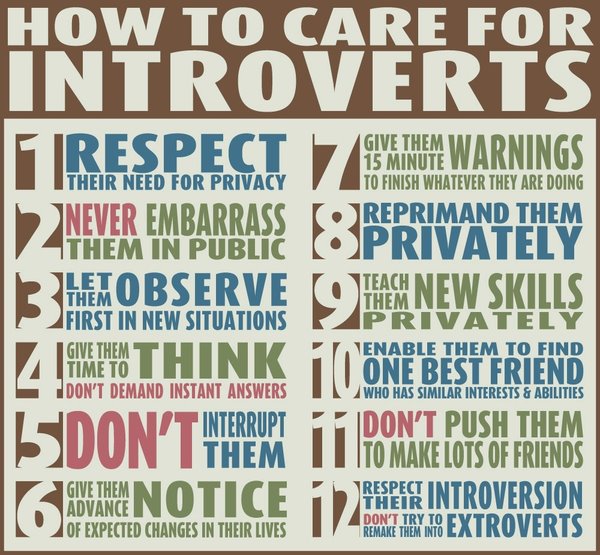
Remember, just like all the other stages of development, this ‘age of fear’ won’t last forever. Staying connected with your child and keeping the communication lines open through the ages and stages of development will help to ease their way as well as keeping your relationship strong and healthy.
Related posts:
Toddlers, Tantrums, and Time-Ins, Oh My!
Testing the Boundaries~What’s A Parent To Do?
To a Toddler Sharing is a 4 Letter Word~MINE!
Babes and Boundaries~A Gentle Parenting Perspective
Your Baby isn’t Trying to Annoy You; He’s Trying to Communicate!
 Award-winnning author, L.R.Knost, is the founder and director of the children's rights advocacy and family consulting group, Little Hearts/Gentle Parenting Resources, and Editor-in-Chief of Holistic Parenting Magazine. Books by L.R.Knost include Whispers Through Time: Communication Through the Ages and Stages of Childhood ; Two Thousand Kisses a Day: Gentle Parenting Through the Ages and Stages ; The Gentle Parent: Positive, Practical, Effective Discipline ; and Jesus, the Gentle Parent: Gentle Christian Parenting the first four books in the Little Hearts Handbook gentle parenting series, and children’s picture books Petey’s Listening Ears and the soon-to-be-released Grumpykins series.
Award-winnning author, L.R.Knost, is the founder and director of the children's rights advocacy and family consulting group, Little Hearts/Gentle Parenting Resources, and Editor-in-Chief of Holistic Parenting Magazine. Books by L.R.Knost include Whispers Through Time: Communication Through the Ages and Stages of Childhood ; Two Thousand Kisses a Day: Gentle Parenting Through the Ages and Stages ; The Gentle Parent: Positive, Practical, Effective Discipline ; and Jesus, the Gentle Parent: Gentle Christian Parenting the first four books in the Little Hearts Handbook gentle parenting series, and children’s picture books Petey’s Listening Ears and the soon-to-be-released Grumpykins series.


 What do I mean? Well, I mean that night waking in infancy does not predict night waking at later ages, at least based on a very comprehensive, longitudinal study out of Switzerland
What do I mean? Well, I mean that night waking in infancy does not predict night waking at later ages, at least based on a very comprehensive, longitudinal study out of Switzerland legends, clichés and adages, and weaving them into unique or humorous settings.
legends, clichés and adages, and weaving them into unique or humorous settings. From kicking and rolling and stretching to being lulled to sleep by the rhythmic cadence of a mama’s heartbeat, little ones spend the first months of their existence wrapped in a warm, dark, gently swaying cocoon, a life-giving embrace, the ultimate hug, readying themselves for their grand entrance to the world.
From kicking and rolling and stretching to being lulled to sleep by the rhythmic cadence of a mama’s heartbeat, little ones spend the first months of their existence wrapped in a warm, dark, gently swaying cocoon, a life-giving embrace, the ultimate hug, readying themselves for their grand entrance to the world.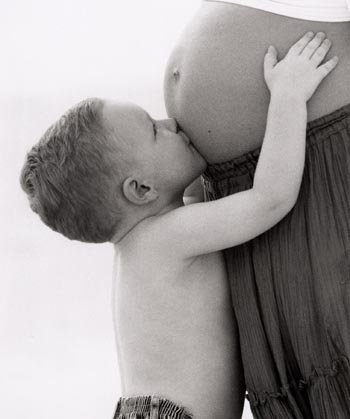 Pregnancy is a time of introspection, excitement, and, often, anxiety for most new mamas. When those new mamas also have other small children at home, that anxiety can become overwhelming as they worry about how they’ll cope with more than one child and how the current little loves of their life will cope with a new sibling. While these are very valid concerns, there are steps you can take to prepare your child for a new sibling and help them to adjust when the new baby arrives that will also help you to cope with life as a mama of more than one little blessing.
Pregnancy is a time of introspection, excitement, and, often, anxiety for most new mamas. When those new mamas also have other small children at home, that anxiety can become overwhelming as they worry about how they’ll cope with more than one child and how the current little loves of their life will cope with a new sibling. While these are very valid concerns, there are steps you can take to prepare your child for a new sibling and help them to adjust when the new baby arrives that will also help you to cope with life as a mama of more than one little blessing. Related posts:
Related posts: